

‘Barbarian’ comments on male gaze




‘Barbarian’ comments on male gaze


Tracie Guzzio, professor of English, reads excerpts from banned books at the banned book read out
BY ALEKSANDRA SIDOROVA News + Managing Editor
Professor of English Tracie Guzzio has spent decades studying banned books, eventually teaching them at SUNY Plattsburgh. She is also a central part of the college’s annual Banned Book Week’s observances, taking place this year from Sept. 22 to 28.
This interview was conducted in-person Sept. 27, and has been edited for clarity and brevity.
Question: At the banned books read-out at Feinberg Library on Sept. 25, you read excerpts from Toni Morrison’s “The Bluest Eye,” “Lawn Boy” by Jonathan Evison and “The Handmaid’s Tale” by Margaret Atwood. Why did you choose those books?
Answer: I often choose something from “The Bluest Eye” just because it’s banned almost all the time. It may be the longest-run-
ning, consistently banned book. It’s also one of my favorite novels. “Favorite” seems like a bad word because it’s such a brutal book, but I think it’s beautifully written and really important for people to understand the impact of racism on someone so small and vulnerable like a child. I think we need to think about those ways — especially when someone’s talking about banning books for children — and children need to see themselves represented in the world. It works on so many levels for me.
“Lawn Boy” is a newer book. I taught it for the first time this past year in an Honors seminar called Banned Books, and it is now consistently being banned. I didn’t have a contemporary male author on the list, either, so I thought I should try this one out, and the students just loved it. They loved Evison’s voice. He’s funny, he survives things, so he’s a really good role model for people who have a lot of anxiety and feel like things are going badly. He just kind of
keeps trucking, just keeps going on. All these beautiful changes in his life happen towards the end, so you really root for him. Again, it’s really distressing that that book is pulled from high schools, that it’s not available in middle schools, but I think a lot of high school students would really benefit from that story.
Then the other one was “The Handmaid’s Tale” — that one just seemed so pertinent. I think my students were shocked at how contemporary and current the book sounded as they were reading it. I think we have to consider some of the real-world impacts of some of the decisions that we’re making, and that book does that.
Q: What is the spirit like in your Banned Books class?
A: I think that a lot of students are shocked when they begin to see which books have been challenged, censored or banned.

BY ALEKSANDRA SIDOROVA News + Managing Editor
More book titles than ever before were challenged last year — 4,240, according to the American Library Association’s report. Besides restricting thinking, taking books off shelves can also influence how well students learn to read.
“The only way to improve and to learn how to read is to learn those skills and at the same time, practice those skills,” said Yong Yu, a professor in SUNY Plattsburgh’s teaching department who specializes in literacy. “If you don’t give (children) a book to read, it’s not going to happen.”
In the three decades that the National Assessment of Educational Progress had been administering reading tests to fourth, eighth and 12th graders, not once was the average score considered to be “proficient” in reading — between having “basic” and “advanced” skills. A third of fourth graders who were tested in 2022 didn’t even meet the “basic” benchmark.
Yu said these scores aren’t good representations of how well children are reading because the NAEP’s tests focus on comprehension, which isn’t all reading is. These results also tend to fluctuate year to year.
“The results of the assessment itself are not 100% valid in terms of assessing students’ literacy skills in every area, but it is a data point nonetheless,” Yu said. “I think people should be really careful before they interpret, what does this mean?”
By reviewing research, the National Reading Panel in 2011 identified five pillars to literacy: phonemic awareness, the knowledge that sounds have corresponding representations in text; phonics, the ability to identify the relationship between sounds and their written counterparts; fluency, the skill to read quickly and expressively while understanding the meaning; vocabulary; and comprehension.

BY GRANT TERWILLIGER Staff Writer
Capitalism is described as an economic system in which a country’s trade and industry are driven by private ownership of property for profit. People’s perceptions on the economy stem from their own experiences with the world around them.
Kylie King, director of institutional effectiveness at SUNY Plattsburgh, gave a presentation at the Plattsburgh Public Library on the similarities and differences between generations in regard to their feelings on capitalism Oct. 2.
King has been working on a research project since 2021 that includes collecting responses from different populations of
people to better understand how to navigate democracy and capitalism.
“We think this is important to look at as the way that people feel about themselves and the way that they approach the world is related to how we think about the economy, how they think about business ownership, how they think about participation,” King said.
King’s research project includes two surveys that have been running for a couple of years. One of them — “Confidence in Capitalism” — allows business leaders to understand the generation that is entering the workforce and their ideals.
“When we think about the traits and the personality and the opinions and values that young people are bringing
forward into the workplace, into the economy, it seems like they are getting more certain,” King said.
The second survey that King conducted over the last three years was the “Capitalism Barometer” survey, which collected data from American adults 18 and above and asked them about their perceptions of capitalism.
The respondents were sorted into categories of detractors, who are unlikely to support capitalism; passives, who are likely to support capitalism; and promoters, who are extremely likely to support capitalism. Not all of the groups can argue their positions on capitalism equally.
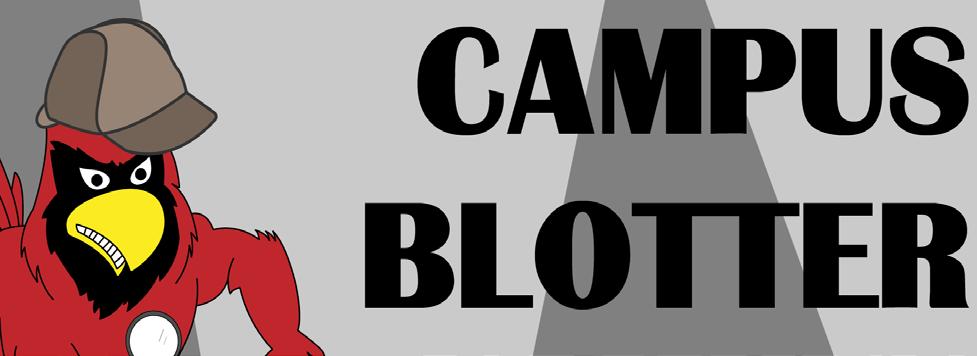
Title IX referrals
University Police referred three reported cases of stalking from March and April 2023 — at Wilson Hall and other unspecified on-campus locations — to the Title IX office.
UP filed a report of stalking Sept. 13, alleged to have occurred on campus around midnight Aug. 29. UP filed another report of a stalking incident alleged to have occurred Sept. 18 at Macdonough Hall around 3:30 p.m. Both cases were referred to Title IX.
UP filed two reports of a scheme to defraud at Moffitt Hall on Aug. 29 and Sept. 2. Both cases were investigated and closed.
UP discovered a student in possession of an illegal drug in Macdonough Hall on Sept. 7. The same thing happened the next day in deFredenburgh Hall and in Harrington Hall on Sept. 26. In all cases, appropriate charges were filed.
Sept. 8
UP responded to an argument in Macomb Hall. UP closed the case upon investigating.
Sept. 10
UP is investigating a case of third-degree rape alleged to have occurred in Wilson Hall at 10 p.m.
Sept. 13
UP filed a report of violence between romantic partners at Macdonough Hall. The incident was closed by investigation.
Sept. 18
UP arrested someone trespassing into Feinberg Library at 7 p.m.
Sept. 20
UP is investigating an incident involving a fake ID.
Sept. 24
UP responded to a report of graffiti in Champlain Valley Hall at 9 a.m. The incident was closed by investigation.
Sept. 30
UP made a judicial referral for cannabis possession in Harrington Hall around 3 p.m.
Oct. 1
UP arrested someone in relation to criminal possession of a weapon in the fourth degree.
ARTS & CULTURE:
1) The previous issue’s article “From following footsteps to forging them: Ashleigh Baer” misstates the year Baer was involved in the production “Head Over Heels.” The show was in 2020.
SPORTS:
1) Stefanie Thompson, highlighted in the previous issue’s article “2010s legends welcomed in Hall of Fame,” did not break any school records.
If you see an error in Cardinal Points, email cp@cardinalpointsonline.com.
Reach our editors at cp@cardinalpointsonline.com.
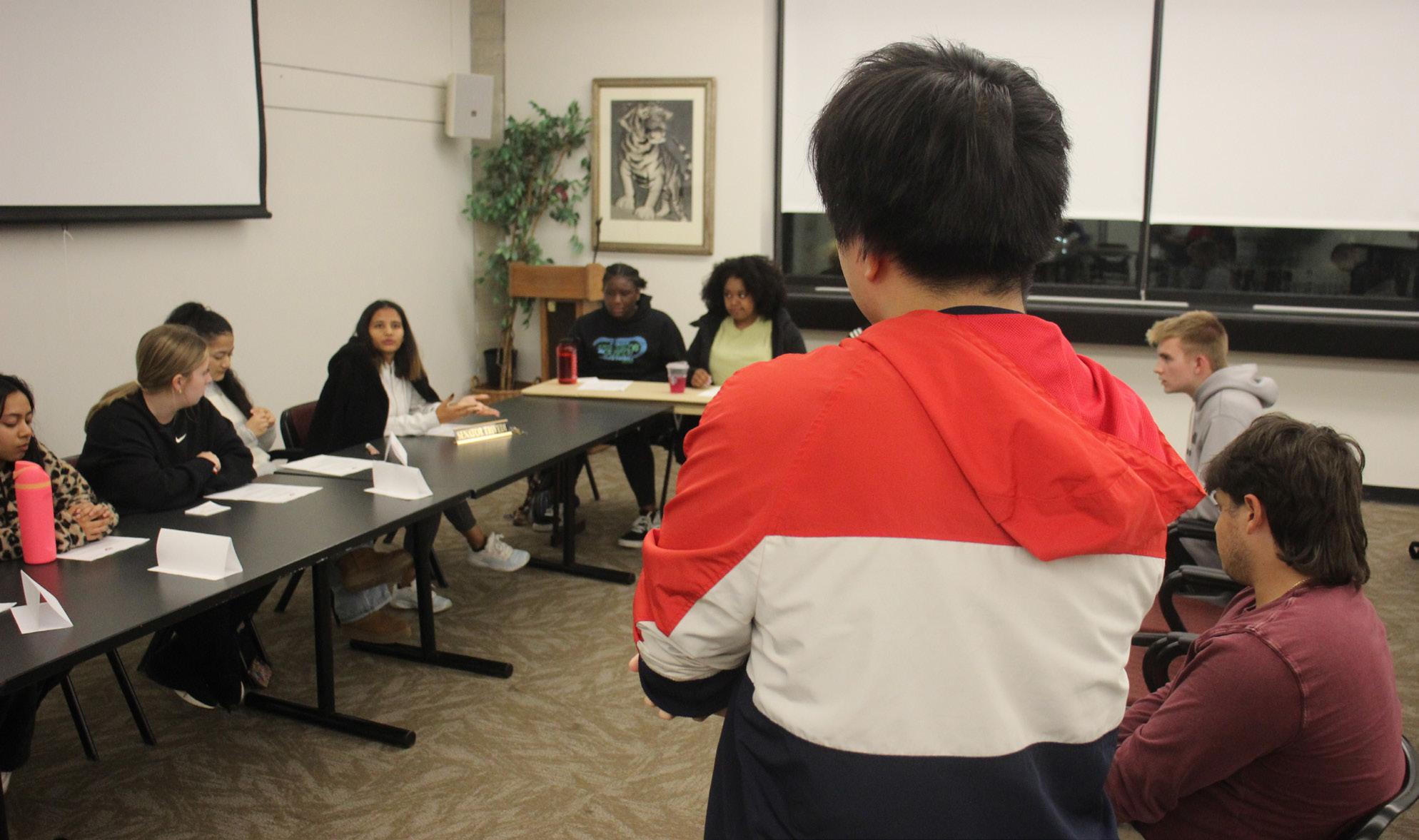
BY ALEKSANDRA SIDOROVA News + Managing Editor
The Student Association Senate let go of a quarter of its additional allocations to fund student networking trips — both professional and spiritual — at its meeting Sept. 25.
Two clubs, the Student Managed Investment Fund and the Accounting & Finance Association, requested $1,000 each toward their joint trip that takes 22 students to Boston. The trips have been a long-standing semesterly tradition: In the spring semester they travel to New York, and to Boston in the fall.
The trip’s itinerary includes Brian Neureuther, dean of the School of Business and Economics, as well as several accounting faculty, as they tour Harvard and offices for investment firms KPMG and HarbourVest.
Students will also have an opportunity to network at a dinner sponsored by SUNY Plattsburgh alumni based in Boston and the
Alumni Association. The trip itinerary also notes SUNY Plattsburgh President Alexander Enyedi and his wife, Andrea, might be attending as well.
Kawai said attending a previous trip allowed him to make the connections to secure an internship with KPMG.
The clubs also each applied for a $2,000 grant from College Auxiliary Services. The SA Senate approved both clubs’ requests with overwhelming support. Senator John Carguello abstained.
The Newman Association, a club centered around the Catholic faith but inviting to all students, requested $495 toward its spiritual camping trip for the weekend of Sept. 27 through 29, to ensure students don’t have to pay out of pocket.
The requested funds cover 11 tickets, $45 each.
The number of students attending is almost triple of last year’s, said Matt Edwards, the Newman Association treasurer.
“We want to make sure our newest members, who comprise about half of the students coming on this
trip with us, don’t have to pay out of pocket, because we want them to enjoy and feel welcomed to the Newman Association,” Edwards said.
Plattsburgh’s Holy Cross Parish is providing another $495 toward the trip to Camp Guggenheim in Saranac Lake, New York.
Edwards said the camp hosts about 30 students — 11 from SUNY Plattsburgh and others from SUNY Potsdam, SUNY Canton and Siena College. At the camp, they would make connections, learn from regional faith leaders and enjoy outdoor activities such as kayaking.
This was the first time the club has requested additional funding from the Student Association in the two years that Edwards has held his position, he said. Edwards also noted that in 2022, the club was at risk of shutting down, but now has 27 members.
The SA Senate approved the request. This time, senators Elizabeth Alden and Carguello abstained from voting.
The SA Senate approved Lolita Kincade, chair of the department
of human development and family relations, as the adviser to the Student Affairs Board. Carguello abstained from voting.
Nekaybaw Ross, SA coordinator for student affairs and diversity, said Kincade’s advising style is compassionate and open-minded. In senator reports, Alden said she had met with CAS Executive Director Catherine Keleher to discuss some of the dining issues discussed on campus and the Senate’s previous meeting.
Senator Janiyah James announced she partnered with Planned Parenthood, where she interns, to donate 100 safe sex kits to the Student Health and Counseling Center, with plans to do the same for menstrual hygiene products.
Senator Burke Nagel reported she had been promoting the Student Association through classroom visits and suggested the SA host giveaways to boost student engagement.
Email ALEKSANDRA SIDOROVA cp@cardinalpointsonline.com
Attend SA meetings and write about what happens, with the opportunity to earn one academic credit. Contact editor in chief Collin Bolebruch at cp@cardinalpointsonline.com or news editor Aleksandra (Aleks) Sidorova at asido001@plattsburgh.edu.
BY ALEKSANDRA SIDOROVA News + Managing Editor
Eastern equine encephalitis, also called EEE, an “imminent threat to public health” in the state, state Health Commissioner Dr. James McDonald declared Sept. 23.
McDonald issued the declaration in response to the first confirmed death caused by the virus Sept. 20 in Ulster County. The declaration also puts in place protective measures, such as mosquito spraying efforts, and responses from local health departments until Nov. 30.
Michael Caraballo, director of the Office of Emergency Management at SUNY Plattsburgh, issued a campus-wide email with information on the virus as well as tips for students to protect themselves.
“Your health and safety is one of our top priorities, and as such we want you to be informed and to take
proactive steps to stay healthy,” the email read.
EEE is a rare but potentially deadly disease transmitted by mosquitoes. The risk for catching the disease is highest in late summer and early fall, Caraballo wrote. Several public events have been canceled because of the threat in Burlington, Vermont — across the lake from Plattsburgh. Symptoms of EEE include sudden
The disease can progress into seizures, brain inflammation and coma. Caraballo’s email advises members of the campus community to use insect repellent, wear protective clothing and otherwise avoid mosquitoes.

Continued from page 1
We live in the state of New York, where there’s not a lot of that going on, and most of them are from New York, and so they’ll be like, “I love that book. How did it get on the list? I can’t believe it,” especially at a children’s literature level. But then they get really protective of books: “This is a book I love. This is a great book. People should not be keeping this from others.”
That’s the spirit that you want to encourage in that class — let’s look at the history of why this happens, look at the context of what’s behind these challenges and then think about what it means to be a teacher or a student, a parent and an American, because we talk a lot about free speech and access to other voices, and that gets trimmed in cases like this.
Q: How long have you been studying banned books?
A: I had attended a banned book festival at the University of Nevada, Las Vegas in 1983, and then when I became a graduate student, I designed my English 101 class around banned books. Students had to choose a book and read it and argue for why it should not be banned. So, one of the first lessons I ever planned was on banned books, and one of the first teaching articles that I wrote was on banned books. I didn’t realize it was that long ago.
It’s been a part of my entire career, really, because my area is African American literature, and predominantly the books that are banned or challenged are either about race or ethnicity or sexual identification. Those areas get hit a lot in my field, so a lot of books that I
Continued from page 1
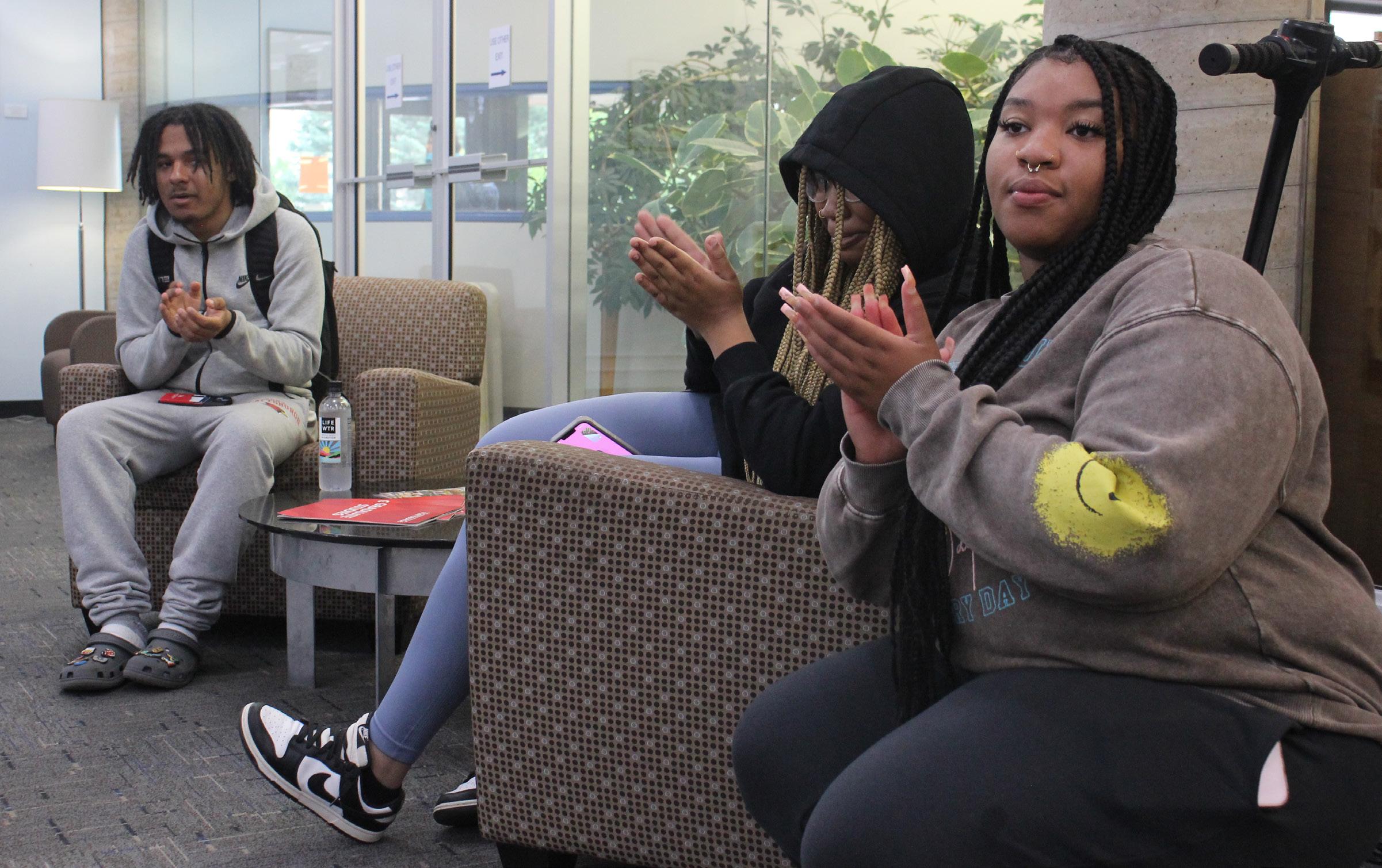
love and I want students to read are challenged.
Q: How have you seen the conversations around banned books change in that time?
A: We’ve always had book challenges. It’s just part of who we are, to have people who want to challenge books. It used to be books that were kind of classics, like “1984,” that challenged authority, that could be seen as ideologically un-American. Since groups like Moms for Liberty came into being, the reasons for banning and the volume of banning have just exploded. It’s almost like a domino effect. It’s becoming a much more political event, whereas it used to be a little bit more local. A local school would have a problem, or local public library would have
Even as the field’s research evolves, teachers can be stuck in the past, heavily influenced by their own learning experiences as well as the training they received at the start of their careers.
“There should never be a law dictating how teachers should teach because that has never been one of the intents or fundamental beliefs of the founding fathers,” Yu said. “You can provide support and professional development to teachers, helping them keep up with the advancement of research findings in their related area, but you shouldn’t dictate how they teach.”
A key component of improving reading skills is practice. Yu explained that early on, teachers usually incorporate three kinds of texts: controlled vocabulary texts, decodable texts and leveled or predictable texts.
Controlled vocabulary texts are simple to read, especially for beginners, but they are designed to include a limited list of words. In classrooms, they can
a problem, and it may be the same few books that kept getting on those lists, but now there are pictures of libraries in Florida where there’s just a big curtain over a whole section of the library because those none of those books are allowed, or you’re seeing books being thrown out. We’ve never seen anything like that before. It’s almost “Fahrenheit 451”-level, and we shouldn’t be involved in that sort of thing. So it is very, very concerning.
Q: What are college students able to do about the issue of banned books?
A: The most basic and easiest thing to do is just to read. Don’t let anyone tell you what to read. Don’t keep from reading something just because you’ve heard it’s a difficult read or it has trou-
also encourage children to guess words from the vocabulary they already have instead of sounding them out or reading letter by letter.
Decodable texts make use of words with similar spelling and sound patterns, such as Dr. Seuss’ “The Cat in the Hat,” but besides stringing words a child is unlikely to encounter in the real world, too much repetition can prevent them from learning other sounds the letter combinations can represent.
“As soon as children are getting automatic at recognizing ‘at,’ don’t use those books anymore,” Yu said. “Provide authentic children’s picture books: Simple books, still one sentence per page, but it’s not a repeated pattern.”
Predictable texts follow sentences with repetitive patterns, and they usually feature illustrations. These types of books should be used only occasionally, Yu said. With too much exposure to predictable texts, the child can stop reading and instead rely on the picture to complete the sentence.
Besides having unique drawbacks, all three text types have a problem in common — they don’t sound natural.
Additionally, the stories these artificially engineered texts tell could be-
bling stuff in it. That’s why writers write — to share their stories with you. Talk about it on social media: what you’re reading, why it’s a great book and why everyone should read it. At the local levels, resist as much as you can. Some high schools have started banned book clubs and just meet in the library and read books they’re not supposed to read. There are little things like that that don’t require the power of the vote, but are just ways to keep books going, and you have to keep standing up against it.
Email ALEKSANDRA SIDOROVA cp@cardinalpointsonline.com
come boring. When teachers transition to reading authentic texts with their students, they are advised to include a variety of styles, genres, perspectives and cultural and linguistic aspects to engage their students.
“People don’t think this is necessary,” Yu said. “They think this is all about political correctness.”
The books challenged the most depict experiences of LGBTQ+ people or people of color, according to the American Library Association’s report.
The right book can foster a lifelong love for reading in children. In turn, the more children want to read, the better they are at it. Yu said she advises her students to group books not by how hard they are to read, but by topic.
“Whatever children want to read, there is always something for them, or if they don’t know what to read, you can always help them,” Yu said. “I think that’s a formula that has the potential to engage children in reading.”
Email ALEKSANDRA SIDOROVA cp@cardinalpointsonline.com

“
Don’t keep from reading something just because you’ve heard it’s a difficult read or it has troubling stuff in it. That’s why writers write — to share their stories with you.
”
Tracie Guzzio, Professor of English

Continued from page 1
“Something that I actually found really interesting was that promoters of capitalism were more confident in explaining its benefits than detractors were in explaining its drawbacks,” King said.
When respondents were asked about the free market, most people felt that the free market and private property were important aspects of the capitalist system.
When asked whether in a democracy everyone has the right to be an entrepreneur, the responses were pretty consistent with over 90% of people agreeing that everyone has the right to be an entrepreneur.
King’s research project seeks to provide information to business owners on the ideals that people seek in job opportunities and the overall differences between how different generations see the economic system in America.
“My goals are in understanding differences and feelings within and between generations, and then hopefully through this process, explaining that to you,” King said. “Not to pass judgment on ‘Are Millennials self-focused?’ not to pass judgment on ‘Is capitalism evil?’”

BY ELLA STUTTARD Staff Writer
Pumpkin painting, a water dunk tank and food trucks filled the Amitie Plaza with excitement as family, friends and alumni celebrated the Homecoming Fall Festival.
Alongside the activities, hay bales, pumpkins and cornstalks around campus helped to bring the festival to life.
MAKING THE MOST OF IT
The sun was warm and music blasted while people explored all the activities Sept. 28. One
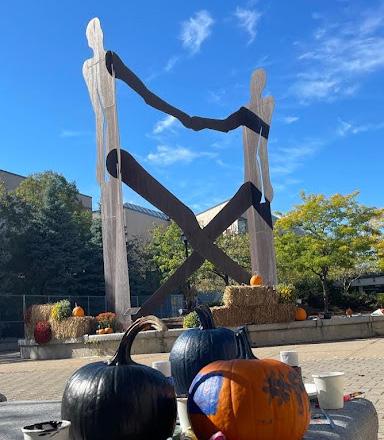
thing that caught the attention of many was Alpha Psi Omega’s water dunk tank.
Joshua Severino, who was working the stand and is a member of APO, especially enjoyed it.
“I know the guy up there, so seeing him get dunked is really fun,” Severino said.
Severino, a sophomore, was quick to point out the school mascot, Burghy, and his appearance at the festival. He was also excited to see the extra effort put into the Fall Festival compared to last year.
“I didn’t really see much last year but this year they went all out,” Severino said. “It’s been a lot of fun.”
Erin Reis, who sat at the pumpkin painting section showed more interest in the illusionist. “We can go back to that,” Reis said.
The festival was slowly coming to an end by the time Reis, whose son is a sophomore at SUNY Plattsburgh, arrived but, she was looking forward to hanging out and getting dinner.

The Fall Festival was held during Homecoming weekend and brought a lot of different perspectives onto campus. Yuonne Nixon, who was sitting on a bench outside of the ACC looking out at the Saranac river, was able to provide another view.
“It’s a beautiful day and a beautiful campus,” said Nixon, grandmother of a first-year student. “I really like Plattsburgh and I’m very happy she’s here.”
In the future, she hopes to catch a couple of lacrosse games to cheer on her granddaughter who plays. She was one of the many family members who came to enjoy the fall festivities.
Severino plans to celebrate the remainder of Homecoming weekend by attending other events. His parents were not able to come up to visit but he remains excited to meet the many alumni around campus.
“I hope to have fun with the alumni and see how it was when they went (to SUNY Plattsburgh),” Severino said.
BY CINARA MARQUIS Arts & Culture Editor
Connecting the Myers parking lot to the Myers Fine Arts Building is the rainbow flag pedestrian crossing, a symbol of pride and solidarity at SUNY Plattsburgh. This year marks the fifth anniversary of the rainbow crosswalk since it was first installed in May 2019.
The rainbow crosswalk was first a student initiative started by alumnus Danial Khoshkehpazi in collaboration with the Student Association and the campus LGBTQ+ resource, then called RADIUS.
“When we think about changemaking, and when we think about advocacy, a lot of times we think about going out there voicing our voice. We forget that there’s a lot of collaboration that goes into making change and making a positive impact,” Khoshkehpazi said at the fifth anniversary rainbow crosswalk celebration held Sept. 28. “We don’t just talk about this stuff, but we want to try to make some lasting impressions that were committed to the concepts of diversity and inclusion.”
SUNY Plattsburgh President Alexander Enyedi thanked Khoshkehpazi and others in the initiative of the rainbow crosswalk for their contributions, vision and push for the installation.
“It’s a reminder that (SUNY Plattsburgh) is truly is a place where everyone belongs,” Enyedi said. ”This rainbow walk is more than just a cross-
walk. It’s a pathway for understanding, for respect and for accountability.”
The original pride flag was created in the 1970s by gay activist Gilbert Baker. Eight colors were utilized: pink for sex, red for life, orange for healing, yellow for sunlight, green for nature, turquoise for art, indigo for harmony and violet for spirit.
Another — simpler — flag was developed later in 1979 which contained just six colors including red, orange, yellow, green, blue and violet. Each col or still still symbolizes its respective meaning in Gil bert’s flag, but they were expanded, too.
Red represents life. It is the color of blood the body’s vital life force — it is also the color of passion.
Orange represents heal ing, fun and celebration.
Yellow represents sun light, stimulating new, bright ideas and thoughts.
Green represents nature, prosperity and glory.
Blue represents harmony and peace — it is the color of the soul.
Violet represents spirit, regality and pride.
In 2017, the Philadel phia Pride Flag was cre ated and with it came two new stripes, respective ly brown and black, which represented the unique challeng es faced by the BI POC community and their contributions to the LGBTQ+ movement.
“The colors black and brown are important ad dition, because often times people of color have been left out of the queer
narrative, despite being a driving force behind the movement,” said Allison Heard, vice president of Diversity, Equity and Inclusion. “With the rise of the Black Lives Matter movement, our society began to shift in understanding and acknowledging the vital role that people of color have played in our society.”
In 2018, the Progress Pride flag was made. It shares the same brown and black stripes but adds
gender binary. The intersex flag has a yellow background with a purple circle in the middle representing wholeness, the colors were chosen to contrast with the traditionally gendered colors, blue and pink.
This semester, the rainbow crosswalk was redone as the Progress Pride flag.
“The new flag pays homage to the people who founded the movement by simultaneously drawing attention to how

BY PHILO YUNRUI WANG Associate A&C Editor
Ceramic artist and entrepreneur Hedy Yang delivered a presentation at Yokum Hall, room 205, Sept. 26, as the first artist featured in SUNY Plattsburgh’s Visual Artist Series in the fall semester.
“Every single photo on my phone was of sunsets, clouds and the sky. Each piece embodies an important memory from that moment,” Yang said.
Much of Hedy Yang’s current work is inspired by the time she spent in the natural beauty of the mountains and the serene skies in the Adirondacks.
With her heartfelt storytelling and numerous glimpses of her works flashing by, Yang opened the series by sharing her ceramic journey, deep connection to nature and the vital role of entrepreneurship in the arts.

She incorporates these visuals into her work, creating ceramic pottery with ethereal glazes that reflect the vibrant colors of sunrises and sunsets.
Organized by the faculty and students and funded by the Student Association through the Campus Arts Council, the Visual Artist Series aims to bring seven to nine artists from a wide variety of mediums to campus each year. It offers public lectures, workshops and demonstrations.
feel like I kind of missed out,” she joked.
Yang’s early love for crafts laid the foundation for her eventual decision to pursue art seriously.

Born in Vancouver, Canada, to Chinese immigrant parents, Yang grew up in a household where creativity was valued but not viewed as a viable career. Both of her parents were talented painters, though they pursued more traditional careers.
“My dad is an automotive engineer, but he’s also a watercolor painter,” Yang shared. “My mom’s a teacher, but she paints as well. So in my head, I always thought art was just a hobby.”
As a child, Yang exhibited entrepreneurial flair. She recalled collecting bunny tail weeds from a pond near her house, dyeing them and selling them to her neighbors for a quarter apiece.
Yang’s artistic journey took a pivotal turn when she enrolled in a ceramics class to fulfill a high school requirement.
“I made one pot and was just obsessed. After that, I was the troubled kid always skipping class to make more pots,” Yang said.
Yang initially pursued a degree at the University of Michigan. Despite her growing passion for ceramics, she struggled with the program’s focus on conceptual art over technique. Feeling disconnected from the curriculum, she made the difficult decision to drop out.
“I wasn’t sure if it was a reckless, irresponsible move or something that would pay off later. Now, in hindsight, I do think it was for the best,” Yang said.

FROM
“Now, people sell those for a lot of money, and I
Much of Yang’s current work is inspired by the time she spent in the Adirondacks during an art residency from 2018 to 2020. The natural beauty of the mountains
and the serene sunsets profoundly influenced her creative direction.
Her time in the Adirondacks allowed her to experiment freely, focusing on exploration rather than producing marketable art.
“I wanted to make things for the sake of making things,” she said.
This period also introduced her to atmospheric firing techniques like wood and soda kilns, which she embraced during her residency.
Yang’s presentation also delved into the entrepreneurial aspects of being a full-time artist. After experiencing financial struggles during her residency and the subsequent COVID-19 lockdown, Yang real ized the importance of pricing her work ap propriately to reflect its value.
When students asked about the price of one of the mugs “Currently, they are $350,” Yang said.
“It’s scary to increase prices, but my business mentor advised me to charge what my work is worth. You have to account for the time and skill you’ve built up over the years.”
Though initially daunting, this decision helped her create a sustainable career.
“I can only physically make so many pieces in a day, so I needed to increase my prices,” she said.

Yang now works fulltime out of her private studio in Detroit and has exhibited her ceramics both nationally and internationally. Her work has been featured in ma jor galleries, including Charlie Cummings Gallery and Louise Buell Gallery, and even sold at highend retailers like Nordstrom.

It was invaluable,” Yang emphasized.
THE VISUAL ARTIST SERIES CONTINUES

Yang also credits her background in entrepreneurship, gained during her studies at Michigan State University, with helping her navigate the business side of her career.
“I learned about writing business plans, applying for funding and setting up a limited liability company.
Yang’s presentation provided a fascinating glimpse into the life of a full-time artist who has successfully merged creativity with entrepreneurship. The next event in the series will feature Melissa Schulenberg, artist and printmaker, scheduled for Wednesday, Oct. 16, at 7:30 p.m. in Yokum room 205. As SUNY Plattsburgh’s Visual Artist Series continues, students can look forward to hearing from more diverse artists across a variety of mediums, all bringing their unique perspectives and experiences to campus.
For more information about SUNY Plattsburgh’s Visual Artist Series, please visit https://www.plattsburgh.edu/plattslife/arts/ visual-artist-series.html
Email PHILO YUNRUI WANG cp@cardinalpointsonline.com

BY CINARA MARQUIS Arts & Culture Editor
After 10 years with no words to write, poet Alesa Bernat released her debut poetry and prose collection “Everything Is Fine.” In July 2023 she self-published the collection which delves into a woman’s journey through the diagnosis, treatment and aftermath of bipolar depression.
Bernat’s journey started in college when she transferred from Jefferson Community College in Watertown, New York to SUNY Plattsburgh to pursue a bachelor’s degree in psychology. She originally wanted to be a school psychologist but after learning about the school’s communication sciences and disorders program, she quickly switched her major to the department. She said she felt connected to the communication sciences and disorders field, not only out of her love for psychology but from experience as someone who has family members with communication difficulties.
After graduating with a bachelor’s degree in communication sciences and disorders in 2011, Bernat decided to stay at SUNY Plattsburgh for her master’s for speech language pathology.
“I had an opportunity to go to some other places, but I was so in love with the people, and the place and the speech clinic, I couldn’t say no to staying,” Bernat said.
To Bernat, the program was amazing. She said she left the university with all the tools she needed for a fruitful career. She graduated with her masters in speech language pathology in 2013.
“It was a super amazing program in terms of the undergrad and grad,” Bernat said. “It was a place that fostered creativity, passion, being and that kind of learning to work together with other people.”
Outside of classes, Bernat participated in arts, singing with the Gospel Choir and the Champlain Valley Singers.
She said that it was special to connect with all kinds of people, including members of the community in these groups. She also did work study, mail delivery and tutoring at the Learning Center.
“I felt like they cared about me as an individual there, and it’s true. No matter where you were on campus, people paid attention to you,” Bernat said.
Bernat also got published in SUNY Plattsburgh’s student literary magazine, North Star,
known as Z-Platt during her college career. The first time she submitted poetry, only one of five made it in. The next time she submitted three poems and each one was published. The publication made her confident and encouraged her to submit her works to other journals.
“That’s where I started in terms of the publishing where those kinds of grassroots college journals,” Bernat said. “You get a lot of rejection, but it was cool that my other college peers liked it.”
During college, Bernat started experiencing bipolar symptoms and her writing became stagnant.
“I didn’t write for a long time, and once I was hospitalized, I didn’t write at all,” she said. “It was a time without words for 10 years.”
After her hospitalization Bernat was diagnosed with bipolar disorder.
“In hindsight, after you learn about bipolar, you realize these things have been going on for a while,” she said.
Bernat discovered that bipolar disorder runs in the family and that her maternal grandmother likely had it and that cousins on the other side of her family also have the disorder.
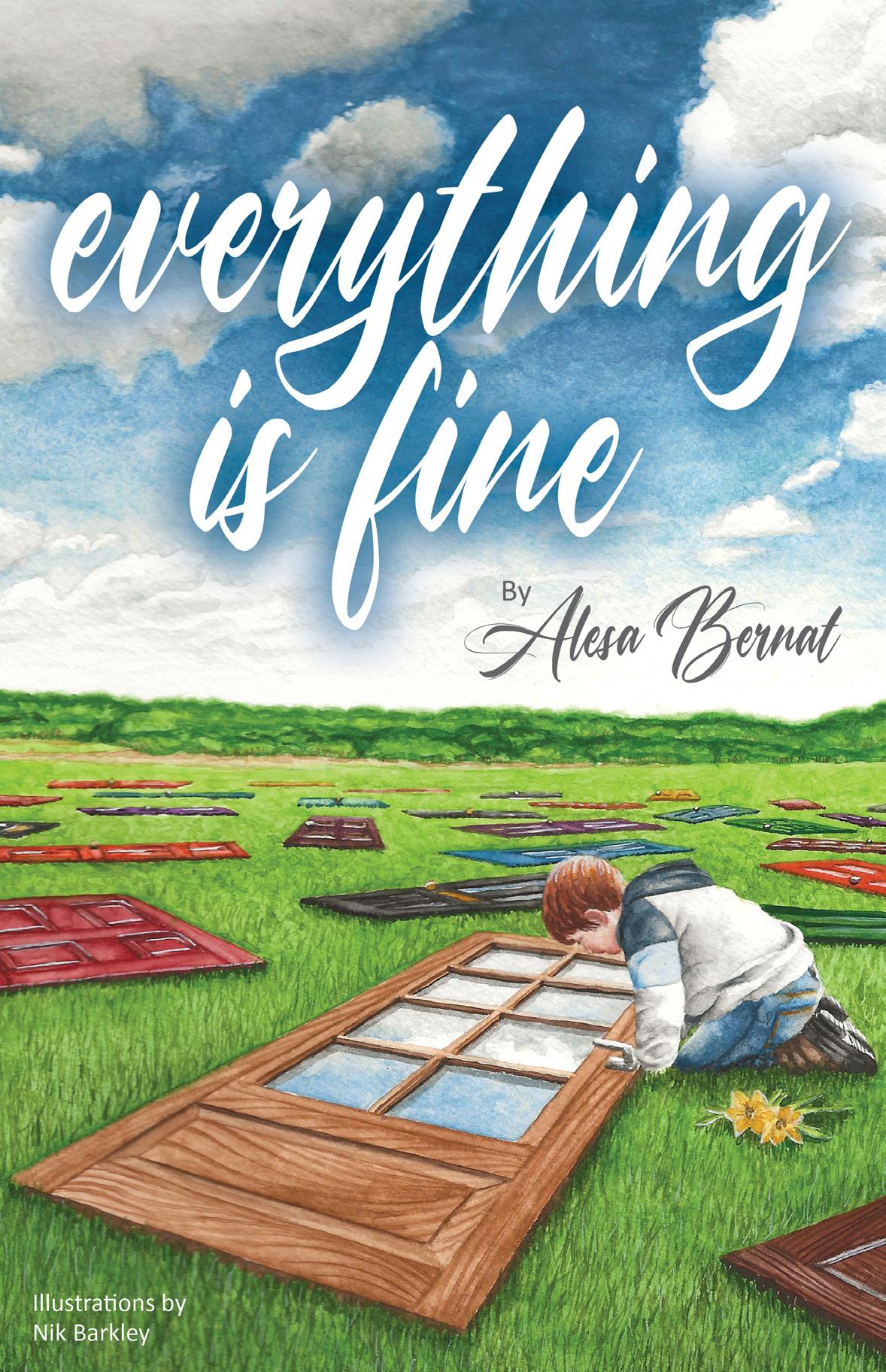
MONDAY 10/7 TUESDAY 10/8
The Clothesline Project
Bring a voice to issues of domestic and relationship violence by designing a t-shirt to be placed on a clothesline with other t-shirts.
The Angell College Center from 11 a.m. to 1 p.m.
WEDNESDAY 10/9
Graduate and Professional School Fair
Learn more about graduate programs from over 30 colleges and universities tabling.
Warren Ballrooms from 2 p.m. to 4:30 p.m.
Plattsburgh Got Talent Auditions
Got talent? Winner of the event on November 8 will receive $500.
Warren Ballrooms from 3 p.m. to 5 p.m.
THURSDAY 10/10
Fuerza: The BIPOC Student Union x KINKS
Come talk and care for your unique hair type in this club collaboration.
The H.U.B. from 7 p.m. to 8 p.m.
FRIDAY 10/11 SATURDAY 10/12
Stuff the Strand Food Drive
The Plattsburgh Noon Kiwanis club is holding a food drive for the JCEO and the Interfaith Food Shelf.
The Strand Center for The Arts from 9 a.m. to 5 p.m.
Plattsburgh Farmers and Crafters Market
Come for produce, meats, baked goods, plants, wine and spirits, honey, jam, maple syrup, soap and more.
26 Green St. from 9 a.m. to 2 p.m.
SUNDAY 10/13
Tim Collins and Quadro Nuevo
Come listen to the “distinctive” jazz band.
The Strand Center for the Arts from 3 p.m. to 5 p.m.




Continued from page 4
access wisdom within and outside of yourself. Ask questions, especially about what you find uncomfortable.
The reversed Death card represents resistance. You may be feeling afraid of a difficult change, let it be, as everything has an end and a new beginning.
The reversed Sun card signifies negativity. False impressions and a lack of clarity may lead to overconfidence. Stay grounded and limit your spending this week.
The Trial card signifies patience. Things may feel uncertain or stagnant this week. This card suggests that you step back and take a break. Time will bring new clarity.
Heard recalled a time where people could not safely fly a flag outside of their homes, whether it be a Pride flag or a Black Lives Matter flag.
“Change doesn’t occur unless we demand it. And before we demand it, we have to know that we deserve it,” Heard said.
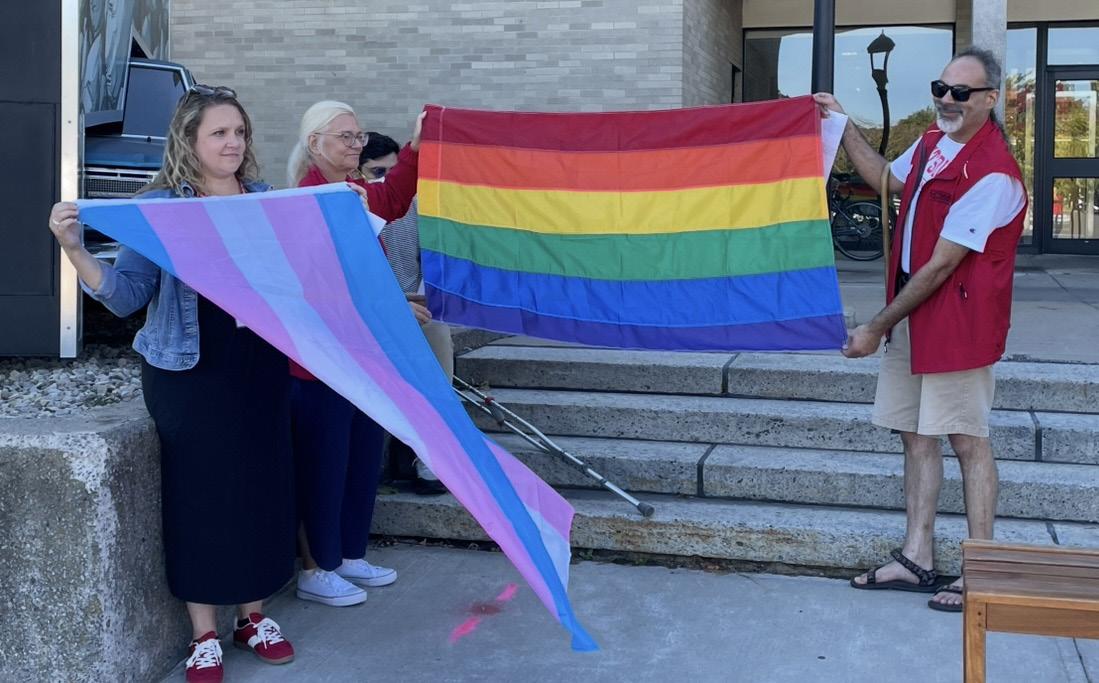
There would not be a rainbow crosswalk on campus today without the efforts of Khoshkehpazi and his peers.
“(The rainbow crosswalk) wasn’t just a thing that we did five years ago and we stopped, but here we are five years later, continuing to elevate the message of inclusivity through painting the new flags and doing more,” Khoshkehpazi said. “It’s our continuous commitment to diversity and inclusion and celebrating all students that made this day possible.”
Email CINARA MARQUIS cp@cardinalpointsonline.com
Continued from page 5
“(In 2015) at that time, I was a new mother, so for whatever reason, I didn’t have the passion for anything. The words wouldn’t come,” Bernat said.
Bernat’s journey with “Everything Is Fine” started in early 2023 when she began writing again and setting boundaries with her career. The change allowed her to better manage symptoms of bipolar disorder and prioritize herself, her family and her passions. She aimed to write about the things that people leave unsaid, such as bipolar disorder.
“When I was diagnosed, I didn’t know at the time that there were other people in my family struggling because as a society, we don’t talk about those (mental health) things,” Bernat said. “And so, when I was envisioning this book and was starting to be able to write again, I wanted it to be about the things that I couldn’t say and that my family couldn’t say. Just to show people that I’m a functional person in society: I have a great career, I have a family, and yeah, I was hospitalized for this, but I’m fine.”
Bernat said that there is a huge stigma surrounding mental health,
and it made her afraid to market the book. She discovered, though, that being the person to start the conversation makes others who share the struggle of mental health feel validated.
“Most of the time when people message me about it, it’s like, ‘Hey, you know, my mother has bipolar’ or ‘my brother has something he’s struggling with’ or ‘I have depression,’ and that was the part that was meaningful to me. It was the poems that spoke to someone and gave someone that voice and gave them the confidence to say, ‘Hey, I have this going on too,’” Bernat said.
Bernat sees multitudes of mental health issues with individuals in her career. She said that better support is needed and her work calls for that.
“Everything Is Fine” starts out with poetry and prose from a naive woman new to her diagnosis and having issues with it. Bernat wanted the book to read like the journey of the woman coming to terms with her bipolar disorder. The works are meant to be read as spoken word and song, which are not Bernat’s usual lyrical style, but she wanted to take a different approach.
“I’m kind of on a different path, myself, work-wise and I’m realizing like it’s
okay to branch out and show people a lot of different types of things,” Bernat said. “It’s taking me on my own journey, again.” Bernat’s journey has brought her to Lowville, New York, where she lives with her husband and children on their family farm.
Visit Alesa Bernat’s website at https://www. alesabernat.com/ Find “Everything is Fine,” on Amazon and at the Plattsburgh Public Library.
Email CINARA MARQUIS cp@cardinalpointsonline.com





The Fool card represents renewal. This card urges you to embrace new beginnings by taking a leap of faith. Have faith in the future, even when you do not know what to expect.
The Hermit card refers to contemplation. Think carefully this week and make space for learning. There will always be something to learn.
The Temperance card depicts moderation. Have patience with whatever you are facing now. Balance will come with time and distance.
The reversed Tower card refers to destruction. Disaster happens, and it hurts, but you can survive it. Reflect and rebuild because change is coming, and that is good.




The reversed Emperor card represents immaturity. You may be facing challenges with commitment or confidence that are leading you to shy away from meaningful connections and opportunities.
The reversed Hierophant card refers to unfaithfulness. Challenge common beliefs and question everything this week. You can create your own values and traditions.
The reversed Chariot card represents stagnation. You may be facing unresolved obstacles in your path. Take a step back and reevaluate your goals.
The reversed Moon card refers to uncertainty. Use your intuition and knowledge from learned experiences to find clarity within yourself.
Photos by Aleksandra Sidorova and Kolin Kriner

The campus’ Emergency Preparedness Day was held Wednesday, Sept. 25 outside the Angell College Center.
The event, held annually by the SUNY Plattsburgh Office of Emergency Management, featured various crisis response demonstrations, as well as fire safety training sessions. The Plattsburgh Fire Department brought along equipment to show students how to suppress fires in case of an emergency.

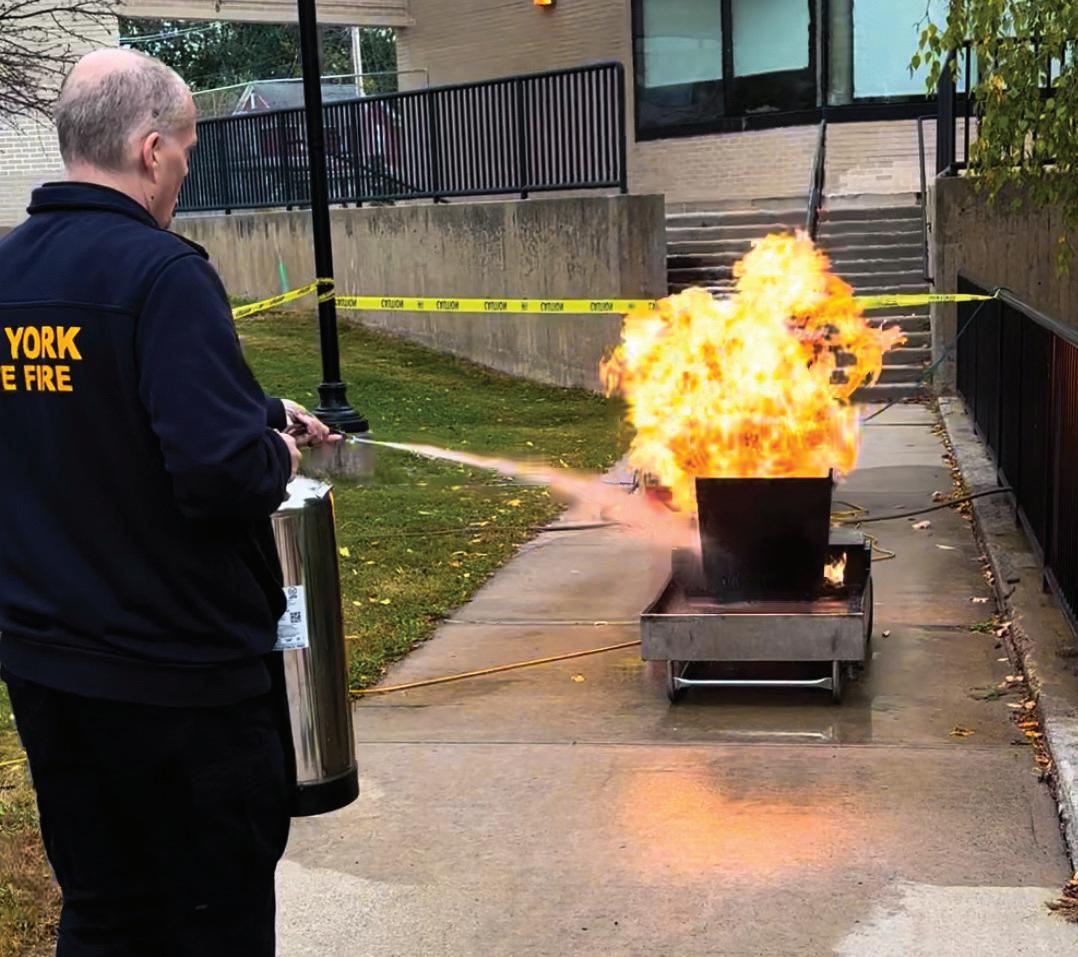
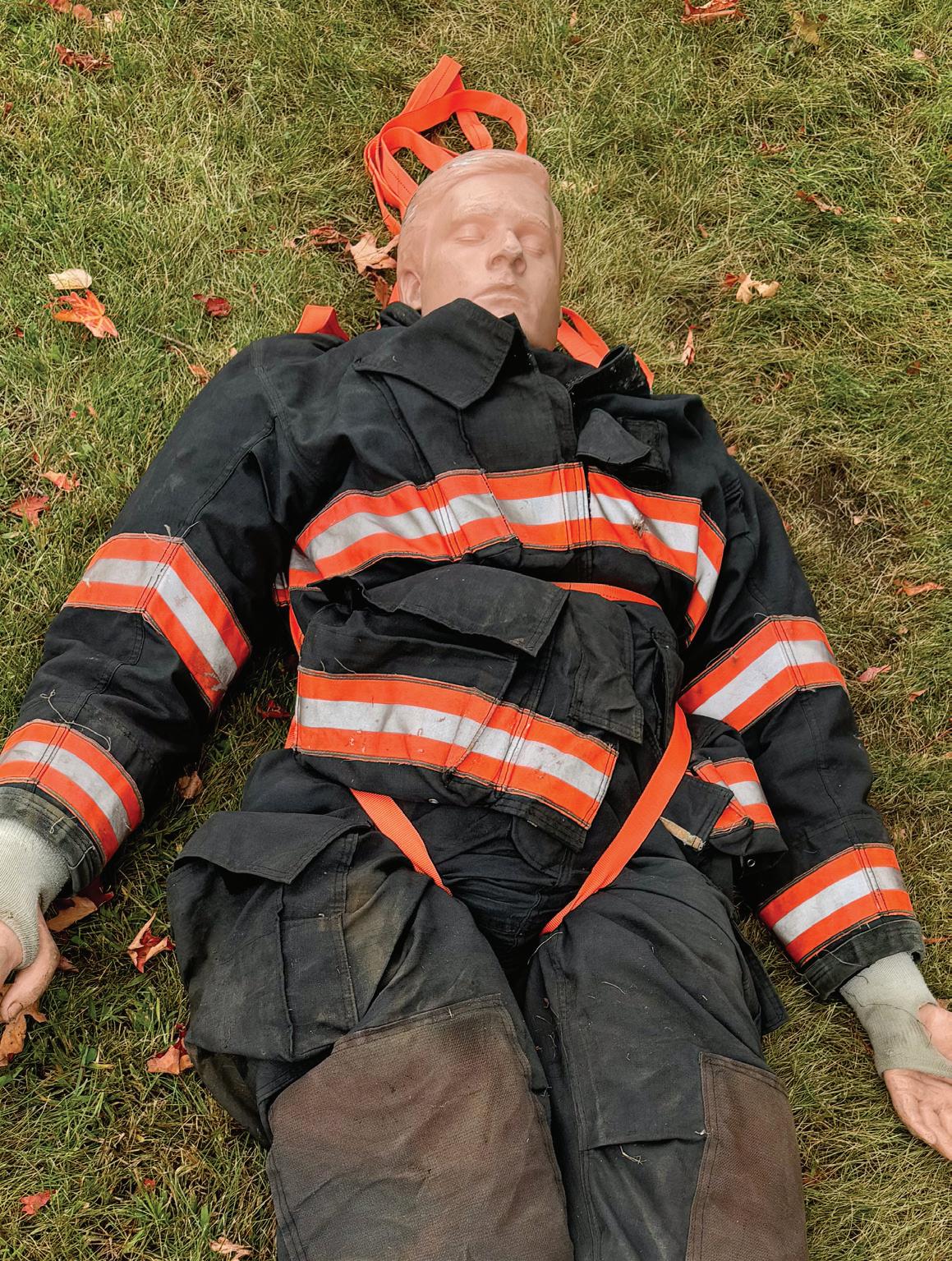


BY COLLIN BOLEBRUCH Editor in Chief
Plattsburgh State men’s soccer is putting forward an outstanding season, standing at 6-0-3 and receiving its first national ranking since 2016. While Chris Taylor, head coach, says the team feels “brand-new,” the key to its success was a yearslong process.
Center back Brian “Cogs” Coughlan, midfielder John Hayes and goalkeeper Teddy Healy, the goalkeeper, are the team’s only four-year seniors. Between them, the vets have played 170 games, starting 164.
“As a trio, they’re tough to please,” Taylor said. “I’d rather have us try and figure out how to reach their standards than let us lower our standards.”
On the season, Cogs has played the second-most minutes with 788, Hayes has the most points with 18 and Healy has posted a 0.57 goals against average.
The three have carried a heavy responsibility over their careers as the team’s best players. Now, in their final year, they’re putting their money where their mouth is as a complete unit.
“I love those two to death,” Healy said. “They’ve been my best

friends now since freshman year.”
TEDDY ‘THE UNIFIER’ HEALY
“Ted is someone who can relate to everybody in the room,” Taylor said. “Ted is maybe the one that brings the group together more.”
In his rookie season, Healy won a goalie competition and the right to start every game. Taylor said Healy was “super mature” from the start, and as the last line of defense, was the steadiest of his first-year peers.
“We needed them to learn through some
tough moments of playing well and playing poorly,” Taylor said. “We needed to play them to help them try and reach their potential.”
After a shaky start, Healy won the final five games of his initial season. He said that being thrown into the fire was important to his development.
“When you’re in the games, it’s kind of like a do or die thing,” Healy said. “You get used to everything so quickly.”
In the years since, Healy has kept his demeanor. As the “cool, tested, steady goalkeep -
er,” as Taylor described, he can keep the rest of the field level when Coughlan or Hayes tries to take over the game.
“Ted’s just the mild-mannered guy that I can have a logical conversation with when maybe the other two are not as logical as they could be,” Taylor said.
Through their games together, the trio have developed a chemistry on the field that goes beyond words. Taylor said it’s “fun” to watch and Coughlan can be his stoic self.
BY EMMA DEO Staff Writer
The Plattsburgh State cross country team had high expectations heading into this season, with the men’s team returning six of their top seven runners from the 2023 SUNYAC Championship. With a young team and a few injuries, Plattsburgh is experiencing a slow start to the season.
Considering the altered landscape of the SUNYAC, the Plattsburgh State Cardinals cross country teams are still looking to make their mark on the postseason.
Geneseo and Brockport’s departures from the conference drastically changed the playing field, as Geneseo was a SUNYAC cross country powerhouse. Since 2011, Geneseo has amassed a staggering 23 SUNYAC titles between their men’s and women’s programs.
This season, Cortland and Oneonta will prove to be Plattsburgh’s biggest competition.
“I think we’re doing a good job right now of trying to main-
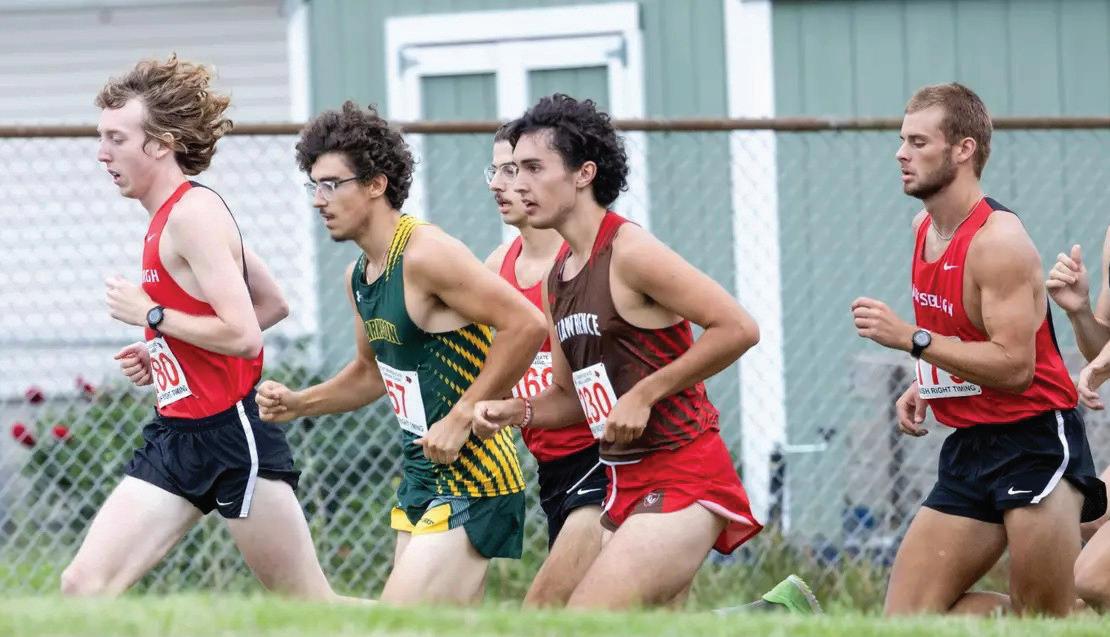
tain a positive outlook on what we wanted to achieve this season and how we are going to get ourselves there instead of letting short-term setbacks dictate how we look at the goals that we’ve set previously,” said Michael Brockway, graduate student men’s cross country runner.
The Cardinals are facing injuries in two of their top runners, Noah Bonesteel and Marissa Colvin. Bonesteel, a senior, was a SUNYAC
Elite 20 award winner in 2022 and 2023 and finished 22nd at the 2023 SUNYAC Championships. Colvin was the lone Cardinal to earn AllSUNYAC honors in 2023, following her 13th place finish at the SUNYAC Championships.
“It was devastating for them individually, but it’s just about who’s going to step up,” head coach Jordyn Naylon said.
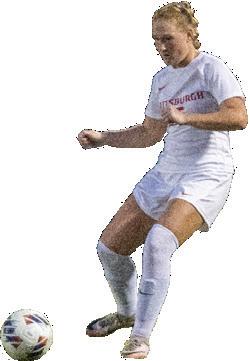

BY COLLIN BOLEBRUCH Editor in Chief
Having reported on SUNYAC sports for three years now, I want the sports section to expand beyond Plattsburgh. In this column, I will explore membership issues, rivals’ seasons and the conference the Cardinals call home.
SUNYAC tennis all comes down to one weekend. Throughout most conference schedules, teams fight for months to paint the picture that is the playoffs. Tennis, now in the final three days of the regular season, has four unclaimed playoff spots — which is all of them.
Though these three days determine everything, the 27 non-conference and six conference meets the league has played so far say a whole lot, from which players will win awards to who will come out on top.
Peter J. Cahill MVP: Justine Stanejko, New Paltz
No, this isn’t a fun choice, but it’s the right one. The New Paltz junior, and one of the best players in her region, will likely win her third-straight Most Valuable Player this season. Before Binghamton, Stanejko is 3-0, 1-0 in singles — allowing just six points — and 3-0, 1-0 in doubles — sweeping twice — with partner Isabel van der Veen.
Last season, Stenejko defeated six All-SUNYAC players and led her team to the SUNYAC Championship and an NCAA bid. Of course, this will likely ride on New Paltz’ playoff success again.


BY JUSTIN RUSHIA Associate Sports Editor
From game day posts and player updates to TikToks and personal videos from the team, SUNY Plattsburgh sports teams take advantage of their online presence.
In today’s era of social media, most student athletes have a presence on various social media platforms. When a team portrays itself positively on social media, it can benefit the team.

“In this day and age, social media is a huge recruiting tool,” Kelci Henn, women’s tennis head coach, said in an email response. “A potential recruit can get an idea of what to expect from Plattsburgh tennis.”
Reaching out and staying connected with athletes is easier than ever. With the help of social media, recruits can go beyond just looking at a team’s record or roster. They can get a real sense of the team’s culture and personality by checking out the Cardinals’ posts.
“With my players having access to the account too, it also allows for the recruit to talk with current players,” Henn wrote. “This makes the program less intimidating and brings some life to the account rather than just seeing pictures.”
Michael Rodriguez, a sophomore on the men’s soccer team, credited social
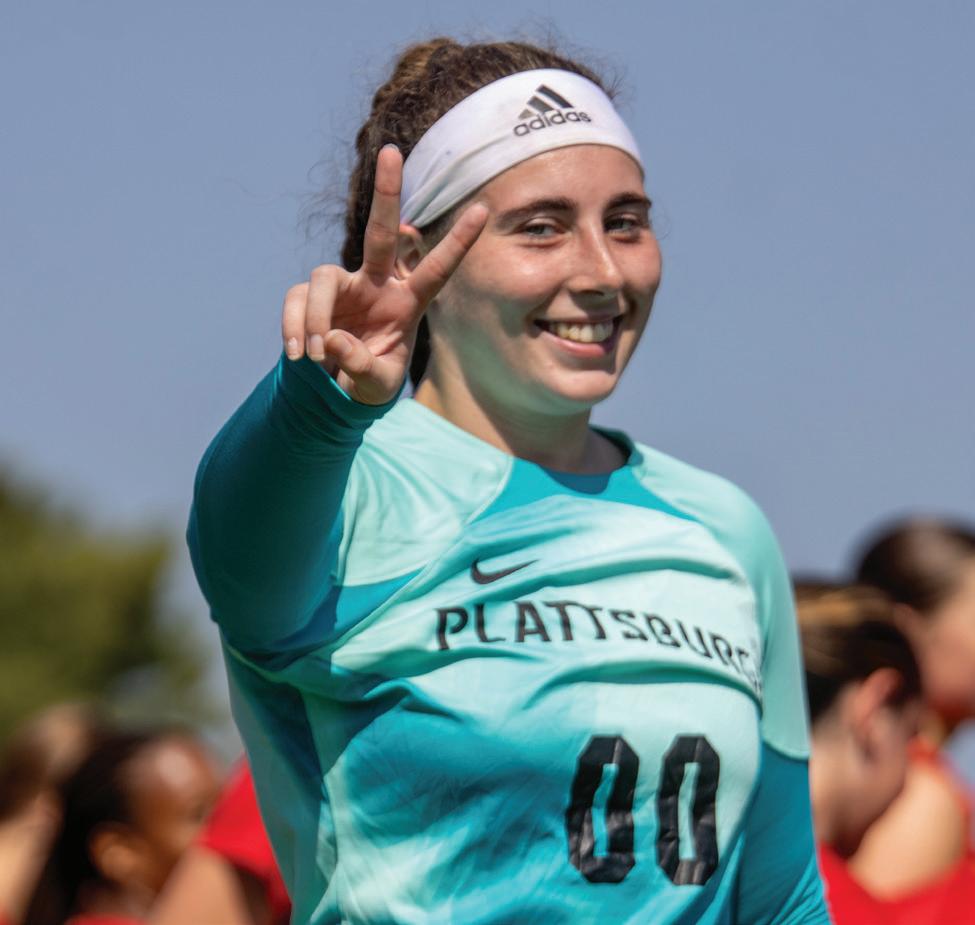
media as a major factor in his recruitment process.
Like many athletes, Rodriguez promoted himself through his social media accounts. This allowed coaches and recruiters to see his highlights and full games and get a glimpse of his personality.
“After posting highlights on multiple social media platforms, coaches would watch them and reach out to me about visiting their school,” Rodriguez said.
Players also rely on social media to find camps and clinics where college coaches can see them play in person.
“I met Chris Taylor, our coach, at the Hudson Valley Showcase, which has a ton of social media recognition, and that’s how I ended up at Plattsburgh,” Rodriguez said.
While many Plattsburgh team accounts, such as volleyball and tennis, are run by coaches, some accounts are run by the players.
Brook Lynn DaSilva, a sophomore goalie and broadcast journalism major, has full reign over the women’s soccer account.
“I have run other social media accounts in the past, so it was fitting for the account to get passed down to me,” DaSilva said.
Connecting with fans is one of the biggest benefits of social media.
“It’s fun for them to post a ‘Day in the Life’ video because it truly showcases a realistic look at what a dayto-day looks like, along with showcasing various parts of campus on the academic side,” Henn wrote via email.
Account owners, such as Henn and DaSilva, don’t
have to create all their content themselves. Caleb Philips, director of athletic communications, and Dawnisha Franklin, assistant athletic communications director, play a large role in creating content for every team’s account.
“Dawnisha and Caleb make the gameday posts and some bigger announcements and graphics,” volleyball head coach Emille O’Brien wrote in an email response. “The day-to-day posts/reels/ TikToks are made by the team or myself.
While teams don’t have official schedules on when to post content, most of them follow a similar routine.
“We try to make posts once a week during our season to keep our social media updated with our accomplishments and participation in the community,” Henn wrote in an email. “I encourage the athletes to post on their personal stories as much as possible to keep our account active and get views from recruits that way as well.”
Social media has become not only a tool for athletics but a part of the athlete experience as a whole. For DaSilva, running her team’s account isn’t a job.
“I don’t get paid,” DaSilva said. “It’s just a labor of love.”
BY COLLIN BOLEBRUCH Editor in Chief
Bridget Ryan, a junior for Plattsburgh State women’s volleyball, makes herself known on the court. Often wearing the libero shirt, she’s constantly in the center of team celebrations and big plays.
The team is yet to find its winning ways, but the squad is still building under new head coach Eimile O’Brien, who was previously an assistant coach at SUNYAC rival Buffalo State.
Bridget is a leader for a team without a senior class. Off the court, she serves as the beloved mascot, Burghy, at hockey games and various events.
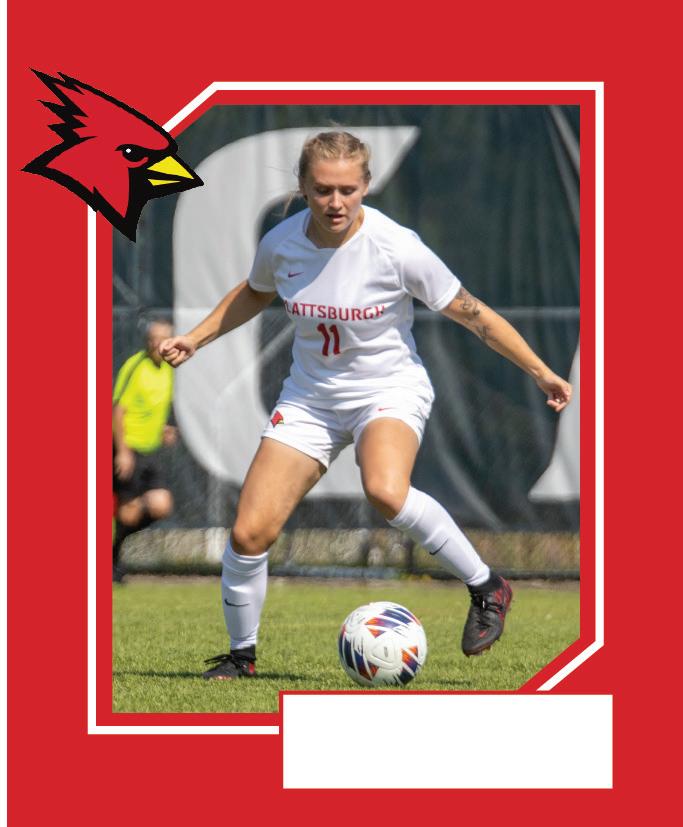

This question-and-answer was conducted with Bridget over email on Oct. 2.
Question: What were the first steps in developing a relationship and culture with O’Brien?
Answer: It took me a while to develop a comfortable relationship with our previous coach so when hearing of our new coach I knew I had less time to form a good relationship. Coming into this season I decided I would just be myself fully and see how it worked out. Over the summer she had individual meetings with all of us to try to break the ice and get to know us a bit before preseason. She really wanted to take the steps to continue to get to know us outside of volleyball. During preseason she had us all over for dinner at her house and we were all able to find out more about each other.
Q: What’s your favorite oncourt chant and why? How was it created?
A: One of my favorites is when Kyleigh (Ganz) dumps the ball over the net it’s “Dump that ball (clap and stomp at same time), dump, dump that ball (stomp stomp stomp).” My other favorite is: “Who do you think’s gonna get that ball? Melina (clap), Ma Ma (clap), Melina (clap).”
I love all of those chants but those
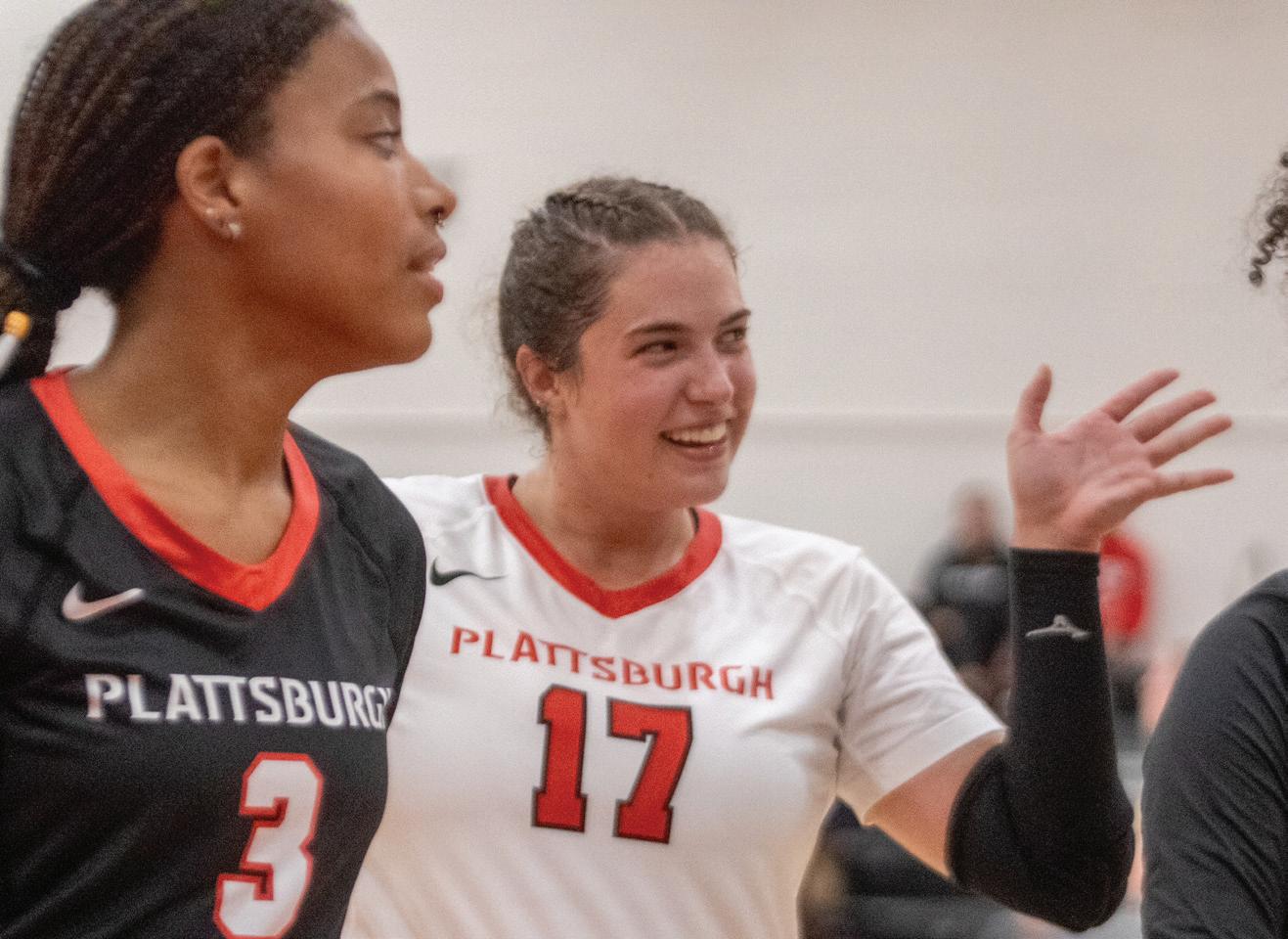
are my favorites because of the beat in Kyleigh’s and just how happy everyone is when saying Melina’s (Morillo). The chants were brought as a tradition coach O’Brien had when she was playing and coaching at Buffalo State. She had me and Kyleigh assign everyone on the team a teammate that they got to make a chant for. Those chants were made by Liya (Girma) and Darby (Collyear). They both also were the ones that passed on our ace chant, block chant and pre-game chant, so it’s no surprise they were so good at making some for their assigned teammates.
Q: What were your initial thoughts on the new NCAA rule allowing some double contact? Have you seen it affect play since?
A: When I first heard of the rule, I was skeptical and kind of caught off guard. Changing one of the biggest rules that we have all followed our entire time playing the sport was not something I saw coming. Initially I was unsure if it would affect play for the better or the worse, but I did feel bad for all the setters who dedicated so much time to perfecting their hands. After starting this season I can see a shift as we go on in the season that everyone’s more comfortable with their hands. If it’s an out-ofsystem ball you will see more nonsetters try to use their hands, which
I think is cool. It also keeps the game moving more and makes the game less in the referee’s discretion and more on solid rules.
Q: What’s your favorite story you have about being Burghy?
A: My favorite story about being Burghy is funny, but I felt bad for those involved. At one of the hockey games, as the game was going on, I heard some yelling and I turned to the DJ table to see a man trying to rip the chair away from the DJ. They were tugging back and forth and then that turned to punching. I was freaked out and more people started to notice and record him but also record Burghy’s reaction, which was freaked out running around waving my arms. I ran to find help to stop the fight because if I stepped in, all I could imagine was the videos of Burghy getting beat up that would go viral. After the police got involved, I had to make a statement as Burghy through the suit, which had never happened before that I know of.
FIELD
Plattsburgh State will host the 2027 NCAA Division III Women’s Ice Hockey Championships, which includes semifinal matchups and the National Championship game.
Over its history, Plattsburgh has hosted six NCAA Championships, most recently in 2016, when the Cardinals won their third straight National Championship and fifth in the program’s history. Plattsburgh has won two more since then for a total of seven, more than any other program in Division III women’s ice hockey.
Former Plattsburgh State men’s hockey player
Cory Doney recently signed a contract with the Roanoke Rail Yard Dawgs in the Southern Professional Hockey League for the upcoming 2024-2025 season.

Continued from page 8
“There’s some things now that I don’t even have to say to Teddy that I would say last year,” Coughlan said. “It’s really all about trust.”
BRIAN ‘THE TACTICIAN’ COUGHLAN
“Cogs is certainly quieter,” Taylor said. “But when he talks, people listen.”
Coughlan, from when he stepped onto the field, commanded respect with his play. Taylor said he was, arguably, immediately the team’s best — even if he was the quietest.
“He has a presence. When Cogs is around, you know it,” Taylor said. “His composure and ability to dictate the game from anywhere on the pitch makes him a leader.”
Coughlan and Hayes both attended Pearl River High School in Rockland County, New York, and are now playing their eighth year together. Both have a tendency to take the game into their own hands when they feel they need to.
“With him, and probably John too, they’ve been very much like, ‘I’ll just do it myself. I don’t need anyone else,’” Taylor said. “We’ve tried to develop them into making everyone around them better and not just putting the cape on and trying to be the superhero all the time.”
Taylor described Coughlan as “one of the most intelligent players” he’s ever coached. He’s able to see things on the field some of his teammates can’t.
“When him and I discuss the game, he’s talking about it on a level that I can really relate to,” Taylor said.
Last season, Coughlan suggested a move from forward to center back, where he’d be more valuable to the team while sacrificing numbers — a
Continued from page 8
Runner-ups: Kathryn Salamida, Oswego — 10-0, 2-0 in singles; 11-0, 3-0 in doubles — and Isabel van der Veen, New Paltz — 4-0, 3-0 in singles; 4-0, 3-0 in doubles.
Rookie of the Year:
Sydney Sladicka, New Paltz
Sladicka has been a major piece of New Paltz’s success this season, going 2-1 as the number two in singles and 1-0 as the number one. Against Plattsburgh and Oneonta, she won her sets by a combined score of 24-5.
The first-year is one in an electric rookie doubles team alongside Angelica Gabriel. In the number-two position, the duo has gone 4-0 and won both SUNYAC matches by a combined score of 12-1. The two are playing in higher
The defenseman played three seasons for the Cardinals from 2020-2023. In his 34-game stint for Plattsburgh, Doney recorded seven goals and six assists and had a plus-17 rating from the blue line.
Doney was removed from the roster in January 2023, right before Plattsburgh won its 24th SUNYAC title.
Doney is the seventh Cardinal to have signed with the Dawgs since the team’s inception in 2016. The defenseman joins his former teammate Christian Dahl of the Peoria Rivermen as the only two former Plattsburgh State players in the league.
TENNIS WRAPS UP NON-CONFERENCE
The Cardinals played their last out-of-conference match of the fall season against Saint John’s University Long Island, winning confidently 7-0 on Sept. 27. The Cardinals were 5-1 in non-SUNYAC matches this season, including four sweeps.
Three tennis athletes won SUNYAC Athlete of the Week honors. Kristy Cantwell was awarded Singles Player of the Week while Megan Phelps and Sophia Gottschall were named Doubles Players of the Week
Two
and
year removed from scoring 26 points. His monster leg and field vision allows him to succeed in front of Healy.
Headed into this season, Coughlan was the only returning backliner with significant play time. With three new starters, he’s forced into a position to use his voice.
“When I talk, people know now,” Coughlan said. “This year, I realized I had to. There’s no real other option with the age of the team.”
“He’s a winner. John is just a born winner,” Taylor said. “Winners find it hard to relate to other people and other people find it hard to relate to winners because they’re rare.”
Hayes lets his emotion be known on the field. When the team needs a score, he forces himself toward the net and takes anyone in his way down with him.
“Everyone says they’re a winner, but not everyone is a winner,” Taylor said. “John is an uncompromising, aggressive winner and sometimes that causes friction because he can’t understand why people don’t want to win as badly as he does. There’s another level to it John has and it scares people.”
Between his sophomore and junior years, Hayes realized the importance of team success. He’s always had a voice, but in practice, he began directing it to make underclassmen better.
“I’m loud. I can be probably hard to play with at times, sometimes I’ll be yelling at kids or just getting into them, wanting more out of them,” Hayes said. “But I try to do it for the benefit of the team.”
In the process of his maturation, Hayes has learned when to use his voice to invoke and when to lift up.
“There’s a time and place for that passion and extreme competitiveness to come out and for when it’s good to keep it in,” Hayes said.
Hayes has harnessed his passion into a persona that underclassmen can
positions than established vets and will prove to be vital to team success this weekend.
Runner-ups: Angelica Gabriel, New Paltz — 4-0, 2-0 in singles and 5-0, 3-0 in doubles — and Emily DeLuca, Oswego — 11-0, 3-0 in singles and 10-1, 3-0 in doubles.
Doubles Team of the Year:
Justine Stanejko and Isabel van der Veen, New Paltz
I think Stanejko again will three-peat this award, this time,with Van der Veen. When Stanejko’s partner Loretta Donovan graduated, AllSUNYAC First Teamer Van der Veen stepped into the first position. The two are 3-0, 1-0 before Binghamton play, sweeping Plattsburgh’s number ones.
New Paltz’s duo is likely going to remain in the top spot through the final conference meets and playoffs, and again, its odds
The team’s next game against Hunter College was canceled. The team is finishing its season in Binghamton with a three-day stretch of SUNYAC matches.
VOLLEYBALL SERVED LOSSES IN ST. LAWRENCE
Cardinal Volleyball traveled to St. Lawrence for the St. Lawrence Tri-Match, losing both games Sept. 28.
The Cardinals lost the first game against the RIT Tigers 2-3. The Cards took the first two sets 25-20, 25-22, but was unable to hold off the rallying Tigers. The last three sets ended with scores of 18-25, 20-25 and 9-15. In the second game, Plattsburgh faced the hosting St. Lawrence Saints, and lost 0-3. The Cardinals fought hard in every set, with final scores of 18-25, 19-25 and 21-25.
The Cardinals will face SUNYAC rival Fredonia on Oct. 4.
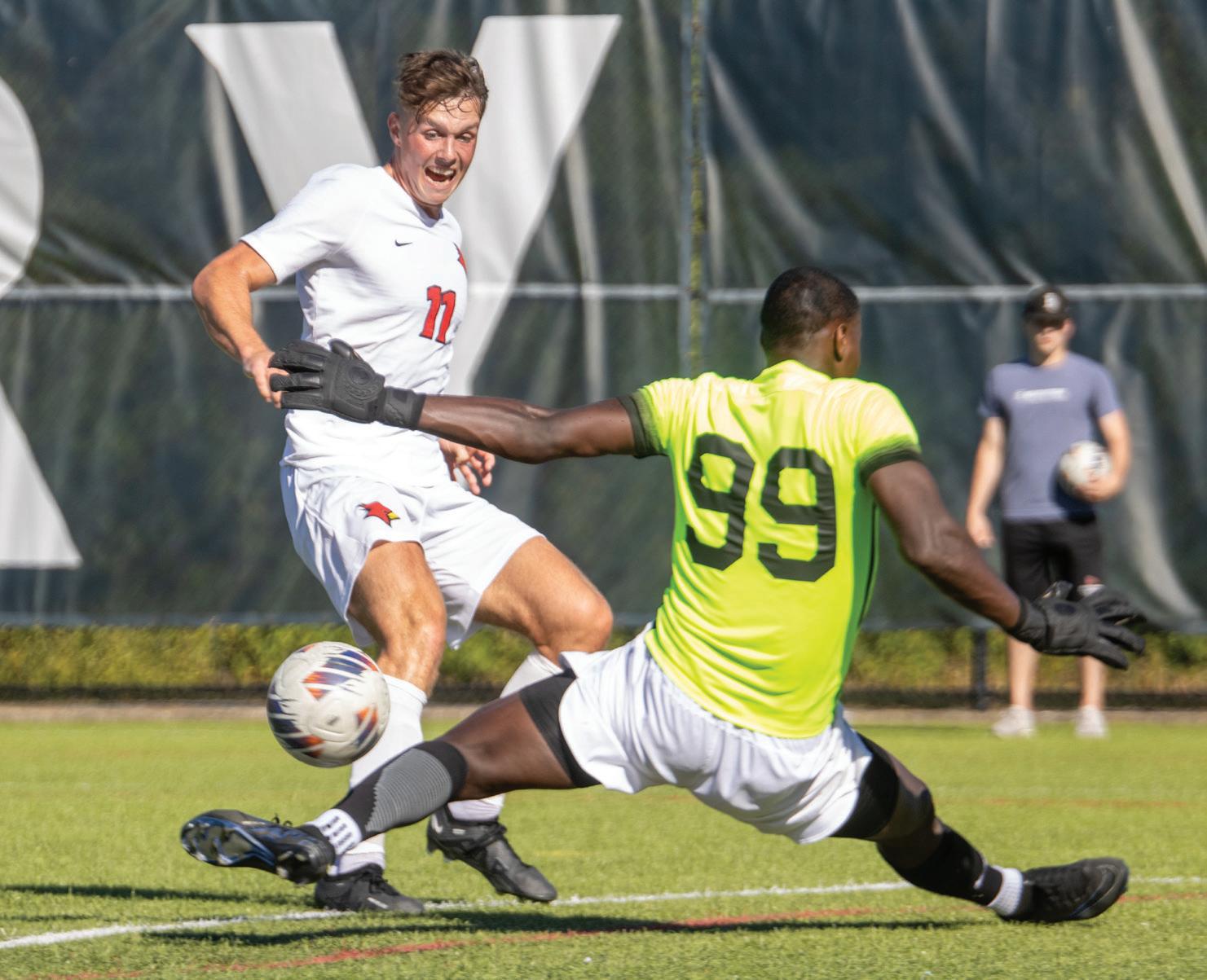
pull from and be inspired by. Taylor commended Hayes for the standard he’s set for the program.
“I wouldn’t trade what John is for the world,” Taylor said. “There’s been times when it’s been challenging, because John can hurt people’s confidence, but I’d take 100 Johns over and over and over because that’s a personality you cannot teach.”
BEYOND THE BIG THREE
When the trio leaves, the roster will be left to a senior class largely without much starting experience with the Cardinals.
Like Coughlan, Hayes and Healy, they’re learning how to become an eliciting voice.
“In athletics, leadership is a hot topic because it’s something that’s not coming naturally anymore,” Taylor said. “We have to kind of build leadership, and we have to give leadership opportunities for people who maybe aren’t leaders yet to try and develop those qualities.”
Plattsburgh has three players that
of winning will hinge on team success from here on out.
Runner-ups: Emily Lyga and Kathryn Salamida, Oswego — 110, 3-0 — and Angelica Gabriel and Sydney Sladicka, New Paltz — 5-0, 3-0.
Coach of the Year:
Tyler Glowaki, Oswego
At this point in the season, Oswego stands at 9-0, 2-0, good for the most wins in the conference in Glowaki’s first full season. This Lakers team is vastly better than their 2023 squad that finished 6-6, 2-5. The Lakers have defeated SUNYAC opponents Fredonia 6-1 and likely playoff team Cortland 6-1. Across its nine wins, Oswego has won 61 sets to nine losses. Oswego sports three singles players and two doubles teams 8-0 or better.
Runner-ups: Rob Bruley, New Paltz — 5-0, 3-0 — and Kelci Henn, Plattsburgh — 6-3, 1-2.
could be four-year starters — Xavier Kamba, Jack Murphy and Lucas Arbelaez. While Taylor hopes they learn from the seniors, he also wants them to be their own selves.
“We’re not looking for someone to turn around and be John or be Cogs or be Teddy,” Taylor said. “But can you take the best of each of them and try and make yourself an even better leader?”
The seniors, while trying to craft a storybook ending to their Plattsburgh careers, are making the most of perhaps their final season of competitive soccer. Next year, Taylor can look back happy, knowing they left nothing out on the field.
He said, “The three of them are being themselves, and that’s all we’ve ever wanted.”
Headed into Binghamton, it has been clear that New Paltz is still the best team in the conference. Though the Hawks have only played three games, they have won a combined 27 sets and lost just one, sweeping both Plattsburgh and Oneonta 7-0. I expect New Paltz to be the undefeated one seed.
Yesterday’s Cardinal-Laker rivalry meet served as a tiebreaker for the two seed, which Oswego took 6-1, in the event Plattsburgh left Binghamton 3-0 and Oswego left 2-1. This is the first time the Lakers have ever beaten the Cardinals, with an 0-21 record dating back to 2000. Cortland, at 2-1, and Plattsburgh, at 1-2, now face off today at 3 p.m. for the tiebreaker for the third seed. Best case scenario for Plattsburgh, the Cardinals finish the season at 3-2, including a win over the Red Dragons. If Cortland also won its final game,
Email COLLIN BOLEBRUCH cp@cardinalpointsonline.com
both would finish 3-2 and the head-to-head would decide who is the third seed — likely playing New Paltz and who is the fourth — likely playing the easier opponent, Oswego. Regardless, unless everything goes wrong, Plattsburgh will likely be in the spring playoffs for the first time in nine years. If it earns the third seed and faces Oswego, there is a chance the Cardinals could make a title meet appearance. The only way the Cardinals miss out is if Plattsburgh loses to Fredonia. No matter what happens this weekend, I’d say New Paltz — most likely over Oswego, less likely over Plattsburgh and even less so over Cortland — is a safe pick for its third-straight championship, and final in the SUNYAC.

BY MICHAEL PURTELL Sports Editor
Plattsburgh State’s home in the North Country is a core of the school’s identity. When student athletes join campus from that home, it makes the connection that much stronger.
First-year Cardinal Bailee Lafountain is one of those local talents from the town of Mooers Forks, New York. After graduating from Northeastern Clinton Central School, Bailee joined Women’s soccer campus in order to stay connected to her roots as a person and an athlete.
“It’s just really nice to be able to play at a college nearby where the local fans and friends who’ve been following me through high school can still come to my games and support Plattsburgh now,” Bailee said.
Bailee’s love of sports was in her blood as her family was always intertwined with sports. Her father, an athlete in his own time, coached multiple sports and raised each of his three children on the field and in the house.
Bailee remembers being on the soccer pitch “as early as she could start.” She began on Mooers’ local teams, and once she was old enough to branch out, she started playing travel soccer for Queen City.
Bailee followed in her sister, Brinley’s, footsteps when it came to sport selection. At NCCS, Bailee earned multiple varsity roster spots on the soccer and basketball teams in eighth grade to play alongside her at-the-time senior sister.
“For as long as I can remember, our weekends were filled with just traveling for tournaments and just playing as much as we can,” Brinley said.
They were set up to play together in Brinley’s final sports season of her highschool career, but COVID-19 put an end to the season.
Now both Bailee and Brinley are Students at Plattsburgh together. Although
Brinley has hung up the cleats to study for her graduate degree in speech pathology, she said she is “really happy” to see her sister continuing her athletic career.
At NCCS, Bailee was an athlete without an equal. She competed in four sports and racked up awards in each one.
On the soccer team, she was a three-time team MVP, a two-time First Team All-Star, one-time Second Team All-Star and scored 100 points over a five-year career.
On the hardwood, Bailee won two Section VII championships, two CVAC championships, two section championships, snagged two team MVPs, one League MVP, two First Team All-Stars, a Most Improved Player award and scored over 1,000 points.
On the softball diamond, Bailee won a sectional championship, won a team MVP, was a one-time First-Team all Star and earned a spot on the All-CVAC team.
She also took part in one of the school’s first flag football seasons, earning a sectional championship for the young program there.
To say Bailee is a decorated athlete would be an understatement.
“I really believe Bailee is one of the best athletes that Northeastern has seen,” said Tim Surprenant, NCCS girls soccer head coach. “When she puts her mind to it, she can accomplish anything in any sport.”
Accomplishing anything isn’t off the table, as Bailee is known for her stubbornness.
“She’s very persistent. She’s the type of person that is always going to get her way and she figures out how to solve all her problems,” Brinley said. “It’s a running joke in our family that once Bailee has her mind set on something, she’s gonna find her way to it.”
Often what Bailee wants is to compete, Brinley said. Bailee’s drive is what helped her grow to be such a stand-out athlete.
Bailee’s motor has also helped her rise to a reputation as a leader on her teams.
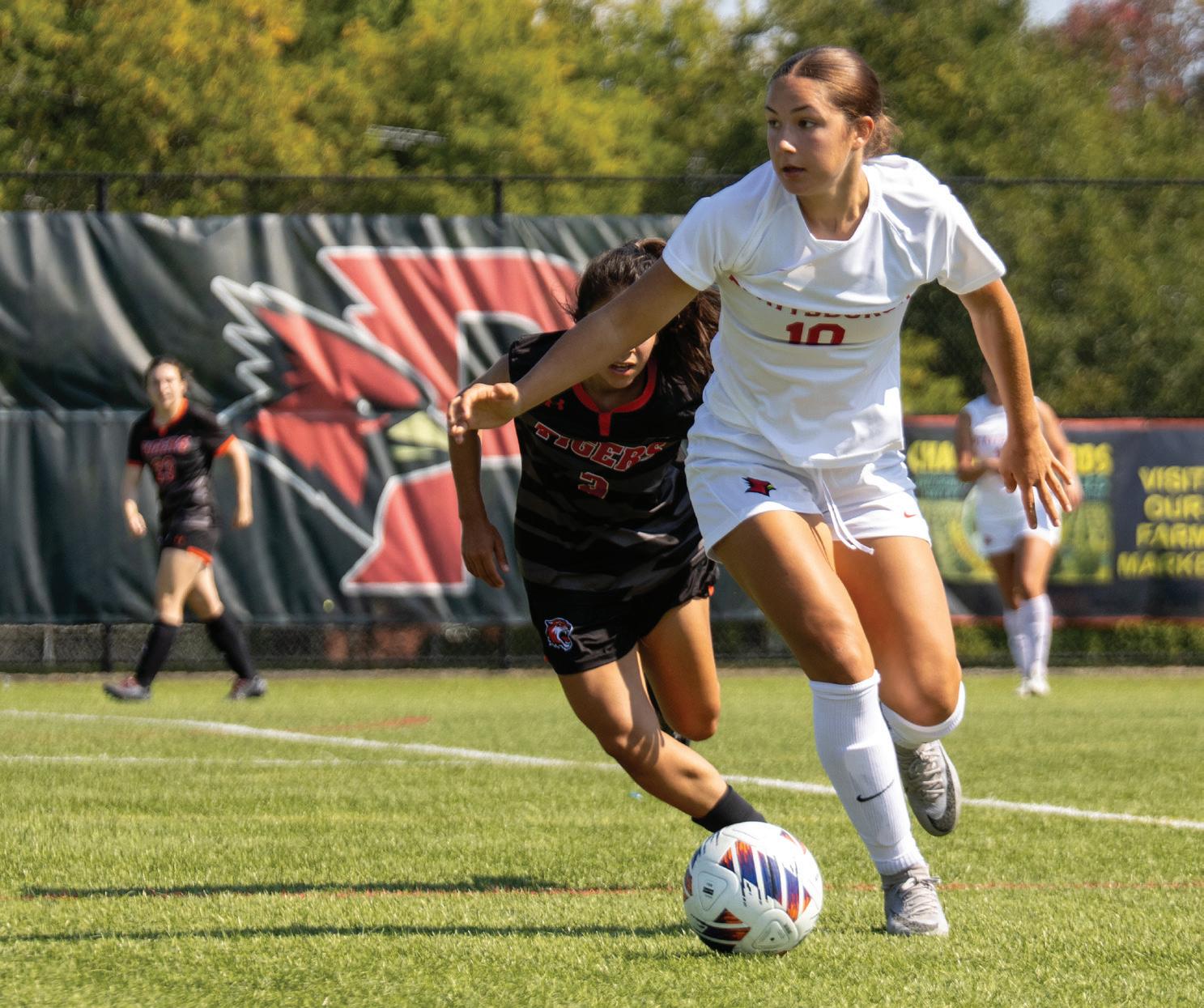

“She is a leader, by example,” Surprenant said. “She will push herself to the point where she really doesn’t have anything left to give.”
The honesty with which Bailee competes is what helped her succeed in her role as a captain in her later years at NCCS.
“Everybody respects Bailee,” Surprenant said. “She’s always making good decisions and she never puts herself in a bad situation.”
Despite her success across the athletic spectrum, Bailee’s first love is soccer. Her love for the world’s game in part comes from a strong soccer culture at NCCS.
“The community around soccer at NCCS is amazing,” Bailee said. “It’s definitely something I will miss, but it was nice having that all throughout high school.”
Bailee’s connection to the program is deep. Even as a Cardinal, she finds time to visit the Cougars and watch the team’s soccer games.
“At the end of the day, sports are about the connections that you make,” Surprenant said. “Bailee continues that legacy.”
The NCCS Cougars love to return the favor as well, as another alumni of the program found their way to the Cardinals women’s soccer team from Bailee’s class, Laci Roberts.
Surprenant and his team have visited the Field House soccer field multiple times already to support their alumni, and they plan to continue doing so.
“I think it creates excitement for the younger girls seeing that we have women from our school representing Plattsburgh State,” Surprenant said. “I have girls on my team right now who say ‘I want to follow Bailee and Laci’s footsteps.’”
The women’s soccer team has multiple athletes who represent several Section
VII and Section X high schools. Bailee and Laci represent NCCS, sophomore Lia Parker represents Saranac, junior Hannah Meyers represents Peru and junior Jill Bezio represents AuSable Valley.
The team makeup provides for an interesting team dynamic, forming new relationships on the same side of the ball.
“It’s nice to really meet girls that you might have known of, but not really known,” Bailee said.
The local talent also contributes to the strength of the team, creating new competitions for roster spots and playing time.
“It’s definitely different from high school,” Bailee said. “But it’s just making me better. I get to work hard in practice trying to prove myself.”
As a Cardinal, Bailee has started building her college resume with her first collegiate points coming off two assists against Morrisville, Sept. 28. She played a season-high 40 minutes. For the first time, her name rang out over the Plattsburgh home field.
“It was an awesome feeling to have my name announced,” Bailee said.
Academically, Bailee is studying in the same undergraduate program her sister took at Plattsburgh, hoping to also join Plattsburgh’s speech pathology graduate program.
Bailee became interested in the career path when hearing stories about her sister’s clinic work in the communication sciences and disorders undergraduate program.
Only time will tell what Bailee’s Cardinal legacy will look like when it’s all said and done, but if her past is any indication, she’ll find success on the pitch at Plattsburgh State.
Continued from page 8
Sophomore women’s runner Grace Estus said that these injuries can be a struggle for the women’s team but overall they have a great team dynamic and that is brought to light when it comes time for competition.
“We just want to continue to support each other, work hard and keep a positive mindset as we look to secure a top three spot at SUNYACs,” Estus wrote in a text message.
Plattsburgh competed in the RPI Harvest Classic on Sept. 27, placing fifth out of five teams. RPI, Williams College, and two Division I programs—the University at Albany and the University of Vermont—also competed. Sophomore Graham Richard — who was named SUNYAC Runner of the Week on Sept 23 — was the first Cardinal men’s runner to cross the finish line with a time of 27:08.8, placing 19th overall. Brockway and first-year runner Sam Faga were the next two Cardinals to finish, placing 22nd and 27th respectively.
For the women’s team, senior Sarah Smith – who was also named SUNYAC Runner of the Week on Sept 23 – led the way for Plattsburgh State, placing 23rd overall. Estus placed 28th and first-year Ella Stuttard followed closely behind in 31st. This was a new personal record for all three women’s runners.
The Cardinals will head to the Connecticut College Invitational on Oct 19.
“We practice early in the morning, which is really tough and it’s a big ask, but they do a really good job of showing up and getting it done. That’s been really awesome,” Naylon said.
The Cardinals have a young roster this season, allowing their runners little time to adjust to firstyear life. The men’s team has eight underclassmen, three of them being first-years. Faga, Brody Olden and Ayden Wefer have all competed for the Cardinals, beginning in the 42nd Annual Cardinal Classic on Aug. 31, just one week after arriving on campus. The same goes for the women’s team, with all four of their first-year runners – Isabelle Cunningham, Jillian Head, Lexie Rostak and Stuttard – competing in the Cardinal Classic.
“I think an issue that plagues a lot of first-year collegiate athletes, especially in cross country, is adjusting to the school-life balance and the workload that the sport puts on the individual,” Brockway said. Faga expressed how it can be difficult to adjust to waking up for practice in the morning and heading straight to class, as well as having meets on the weekends, but overall, he is persevering and adapting well to the collegiate lifestyle.
Going forward, the team needs to keep a tough mindset while enduring setbacks due to its injuries.
“As a team we want to work toward pushing harder in races and just believing that the work that we put in is going to pay off,” Brockway said. “As opposed to staying conservative and being afraid of that pain, because we’ve trained to fight through that pain.”

BY NADIA PASCHAL Opinion Editor
Celebrities are constantly in the news, with discussions about their personal life, businesses, art and lately, their wealth.
After Forbes deemed Kylie Jenner as the first self-made billionaire in 2019, there was a lot of controversy surrounding this title.
Since then, more and more people have been discussing the topic of billionaires within mainstream social media, and whether that status in and of itself is OK.
Other than Jenner, other billionaires frequently featured in the news include Elon Musk, Jeff Bezos and Mark Zuckerberg. What these select few members of the billionaires club all have in common is creating successful companies.
When looking at the 1%, there are some questions that immediately pop into my mind. How exactly did these businesses grow to be as big as they are now? How did these people get the money for their startup? Who are their parents?
These wildly successful people are incredibly polarizing, as they have plenty of fans but also plenty of people who are against them and their morals. To be completely honest, I believe most of them don’t deserve their wealth at all.
Most billionaires do more harm than good for society, if they do any good at all. Most of the richest people in the United States accumulated their wealth in the tech industry, as we’re currently in the digital era. As of April 2024, there are approximately 340 billionaires in the tech industry alone, according to Forbes.
Let’s take a look at Zuckerberg as one example, as his net worth is just above $200 billion.
In 2004, Zuckerberg was involved in the creation of Facebook, which is now worth

more than $1 trillion, according to bankrate.com. The company grew exponentially and quickly became one of the most successful in the world.
However, Zuckerberg landed himself in hot water in 2018 when he allowed private user data from Facebook to be collected and used for political campaigns.
Why should a person like this be celebrated if he actively chose to break confidentiality and compromise their infor-
mation? These kinds of actions should have much harsher consequences and should not be ignored.
Bill Gates, founder of Microsoft, is often used as an example of a good billionaire.
Gates and his wife, Melinda, have their own philanthropy, aptly named the Bill & Melinda Gates Foundation.
With this venture, they aim to improve global health, global development and access to
technology and education in lower-income areas.
This is more than what most other billionaires have done in terms of philanthropic efforts, yet it doesn’t change his status as one of the wealthiest men in the country. In an episode of his Netflix docuseries, “What’s Next? The Future With Bill Gates,” he said that he considers himself to be too wealthy, and admits he doesn’t need as much money as he has.
If Gates truly believes what he is saying, then why does he still have so much money? Is he giving away as much as he can? In a world where the rich keep getting richer and the poor can hardly survive, it’s crucial to think about who truly deserves their success and fortune.
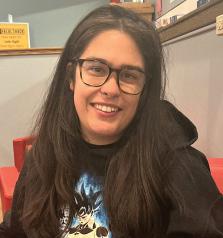
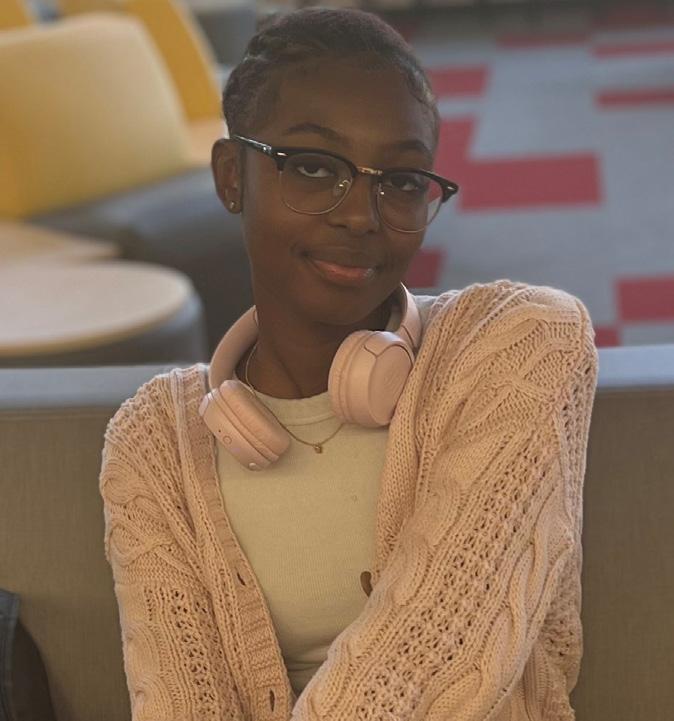


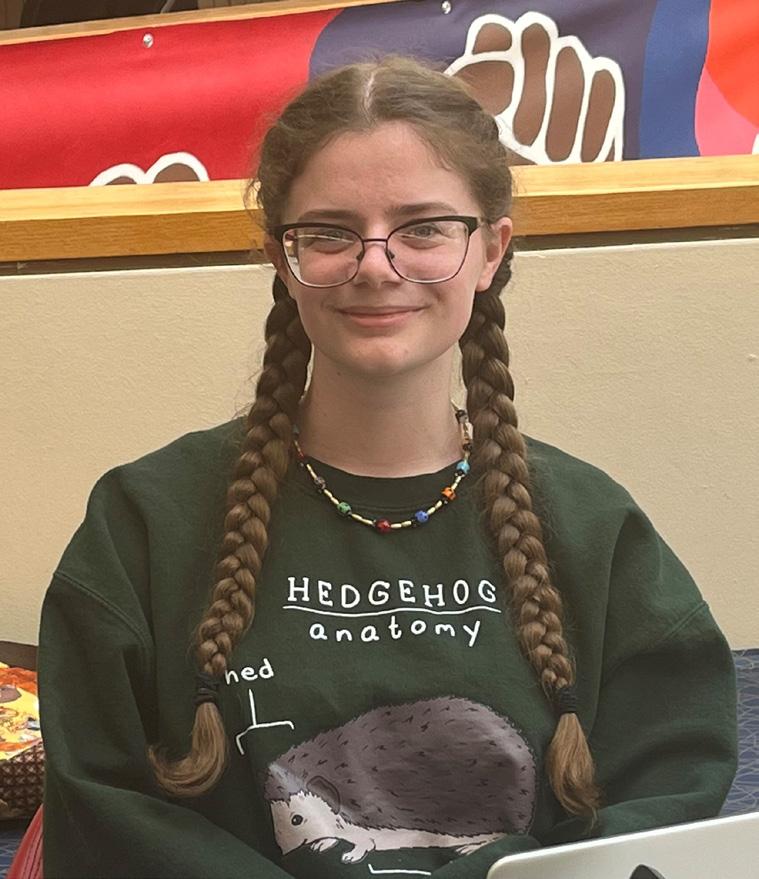




BY KOLIN KRINER Public Relations Chair
I find it remarkably refreshing when psychological horror movies take a step away from grief and focus on other world topics. I think that’s what I love about the film I am going to be discussing today. There will be a spoiler warning in effect for this review.
“Barbarian,” directed by Zach Cregger, hit theaters in 2022 and became an instant cult classic. The film focuses on social issues and dynamics in a masterfully-crafted way that makes the movie rewatchable, and has become one of my personal favorites of recent years.
The movie is centered around Tess, played by Georgina Campbell, as she arrives at an Airbnb outside of Detroit for a job interview as a research assistant for a documentary. To her shock, however, the Airbnb is already being inhabited by a man named Keith, played by Bill Skarsgård. The movie then enters an uncomfortable array of scenes between the two attempting to interact, as well as what to do about the situation at hand.
What’s great about this whole ordeal, though, is the undertones behind it. Keith was raised to respect women through chivalrous gestures, whereas Tess, through her clear discomfort around him, wants nothing to do with the situation as she is a woman traveling alone.
Keith is meant to represent the male gaze in the function of trying his best to come off as respectful, yet being pushy surrounding his attempts. Tess is supposed to represent the idea of a woman walking alone in the dark, fearful of what could happen to her because of the society that surrounds her.
“
The film focuses on social issues and dynamics in a masterfully-crafted way ”
The dynamic this builds is not only awkward, but realistic of how both of these parties would approach the situation. An example of this is when she first gets there, Keith offers Tess a cup of tea, to which she says “No, thank you.” She then goes to use the restroom and when she comes back, Keith is at the table with the cup still sitting there.
The cup remains there, untouched. Later on, realizing the clear discomfort Tess would have by this gesture, offers to share a bottle of wine with her, which he notes is unopened so she can see him open it.
The two eventually begin to bond through a common interest found in a book. They begin to get to know each other, and ultimately they go to bed — Keith on the couch and Tess in the bedroom. The next morning, Keith is already gone for the day and Tess goes to use the bathroom, but finds there is no toilet paper, which leads her to a hunt, ultimately bringing her to the basement.
In the basement, she discovers a passageway, which takes her to a bleakly lit room with a bed, a camera facing the bed and a bucket, as well as what appears to be blood on the wall. During this, the door upstairs closes on itself and locks her in, with her phone upstairs, leading to her needing to wait for Keith’s return.
When Keith comes back, she tells him what she saw, but he doesn’t think it’s that serious, claiming that there’s nothing scary about a room with a bed and a bucket. Keith goes to investigate and takes a while so Tess goes in to find him. She finds that the passageway goes deeper than expected and discovers Keith who looks scared, and then out of nowhere a naked woman appears and bashes Keith’s head into the wall — repeatedly.
The movie suddenly does a threeweek time jump to California, following a new character played by Justin Long named AJ, an actor. AJ is cruising down the coastline when he gets a call from his agents about him getting dropped from a TV show
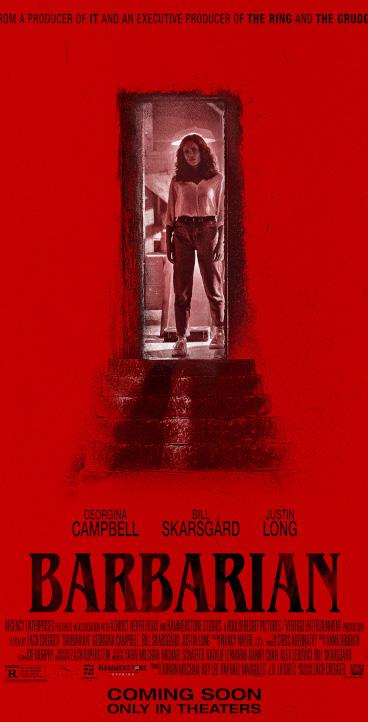
because an actress alleged he had sexually assaulted her. He travels to Detroit to sell one of his properties in order to stay afloat. The property that he is going to, however, ends up being the Airbnb from the beginning. Once there, he gets a phone call from an old friend to go drinking.
While out, he reveals to this friend that he didn’t assault the actress and that she was into it, just that it took her “a little convincing.” When he returns home from drinking, he calls said actress and apologizes profusely before going to bed.
The next morning, again on the search for toilet paper, AJ finds the passageway and begins to measure it to add square footage to the property. Of course, while doing this, he gets attacked by the naked lady and is thrown into a cage, where the viewer is reunited with Tess.
The film does another time jump, this time back in time to the 1980s.
In the modern day, the town appears disheveled and abandoned, but the time jump brings us to a more vibrant era. The viewer follows a man named Frank as he goes shopping for several items that he claims are being used for a “home birth.”
The film once again jumps back to the present, where the naked lady, called “The Mother,” tries to feed AJ from an old baby bottle, which he refuses. This makes the Mother mad and she jumps down and brings him to her nursing room. Tess sees this as an opportunity to escape. However, due to how her character is driven,she returns to help AJ.
At the same time, AJ goes deeper into the passageway as he was able to briefly escape the Mother. He finds himself in an old room where a very aged Frank is lying. In the room, AJ finds several tapes of Frank sexually assaulting women, and AJ calls him a monster. Frank ends up shooting himself in the head.
I won’t continue with spoilers for the film as the ending is worth the watch. However, I would like to again discuss the social undertones of all that has led up to this point.
The movie’s cut to AJ again shows the world in the male gaze, of him believing what he did wasn’t sexual assault despite his confessions saying otherwise. This is in contrast to him calling Frank a monster — despite what Frank did being a lot more torturous and disgusting — at the end of the day, they are both two peas in the same pod. AJ recognizes the fault in others despite what he did being the exact same thing.
The film also tackles whether the Mother is a villain, or simply a victim of circumstances. Later in the film you learn that she is the result of several generations of inbreeding at the hands of Frank, and has lived in the passageways of this Airbnb her entire life. Being a mother is all she has ever known other than Frank. Her only form of interaction has been with a TV playing parenting videos on repeat. All the Mother wants to be is just that — a mother. As much as you can view her as a villain, it’s important to remember that she is the product of the man that created her. I honestly sympathize with her.

Cardinal Points has received the following awards from the Associated Collegiate Press (ACP):
ACP Hall of Fame
Inducted in Fall 2010
All American
Spring 2018, four Marks of Distinction
Spring 2016, five Marks of Distinction
Spring 2014, four Marks of Distinction Spring 2012, four Marks of Distinction Spring 2011, four Marks of Distinction Fall 2010, five Marks of Distinction Fall 2009, four Marks of Distinction Spring 2009, four Marks of Distinction Fall 2008, four Marks of Distinction Spring 2005, four Marks of Distinction Spring 2004, four Marks of Distinction
Fall 2003, four Marks of Distinction
Fall 2002, four Marks of Distinction Fall 2001, four Marks of Distinction Fall 2000, four Marks of Distinction
There is so much more to talk about with this film, and that’s what is so amazing about it. I could go on for ages discussing the film and its themes, and because of that, this is the first movie I am giving five out of five stars.
First Class
Spring 2013, three Marks of Distinction Fall 2012, three Marks of Distinction Fall 2011, three Marks of